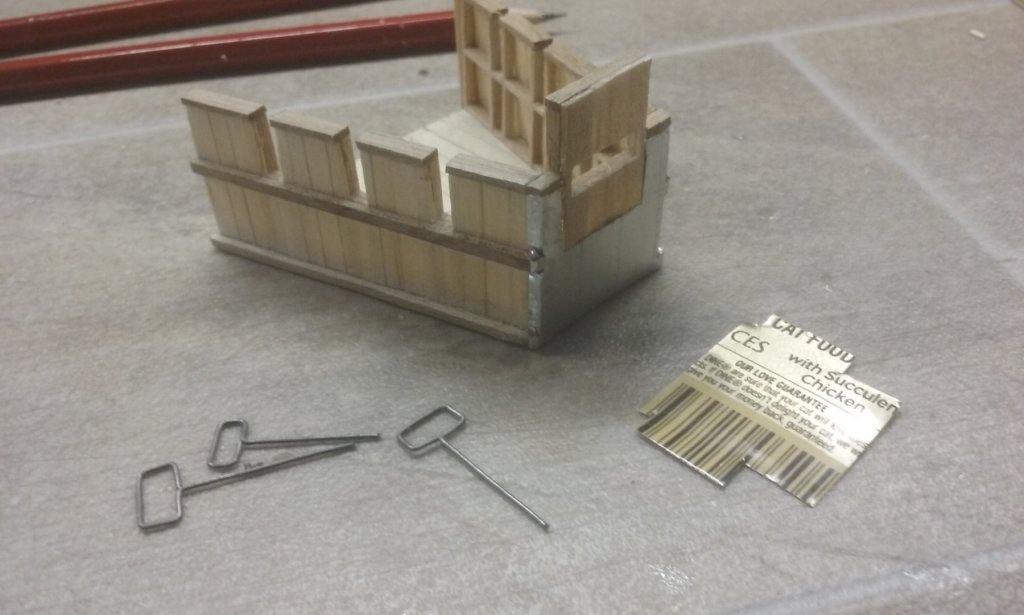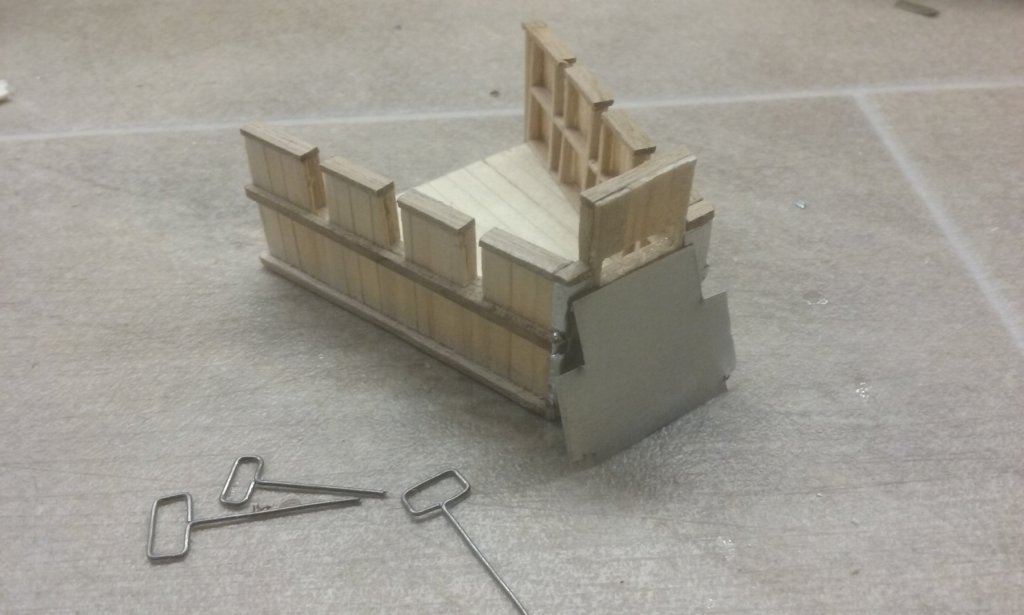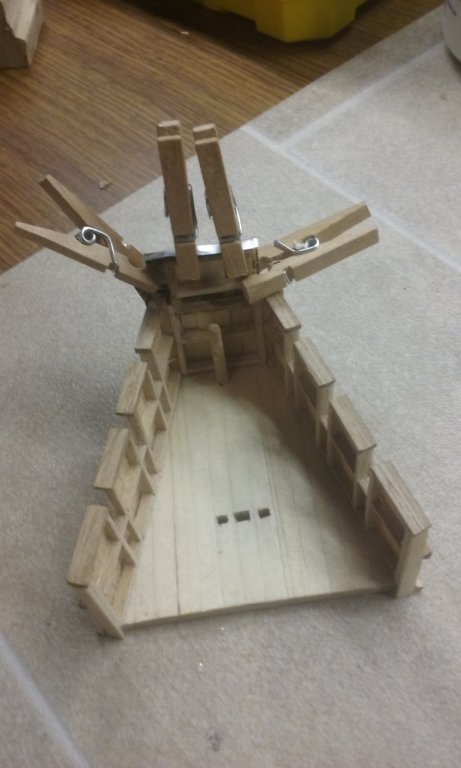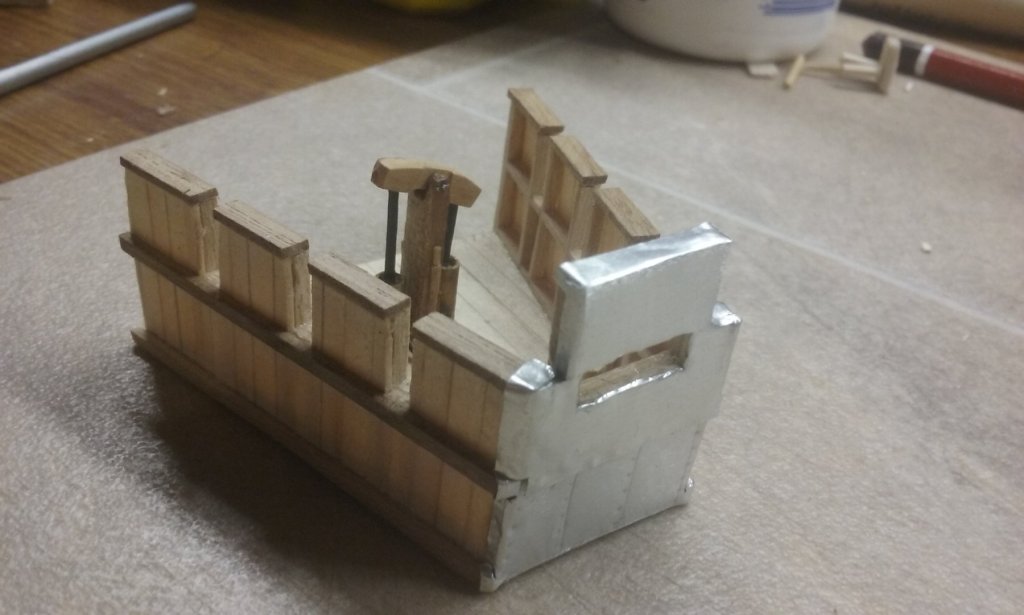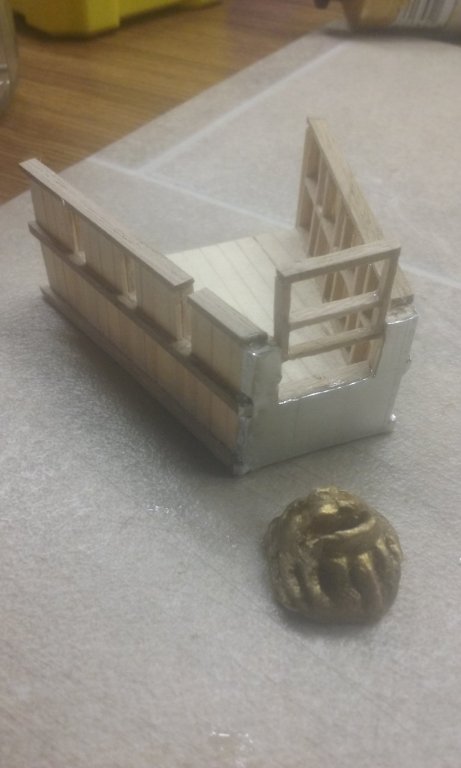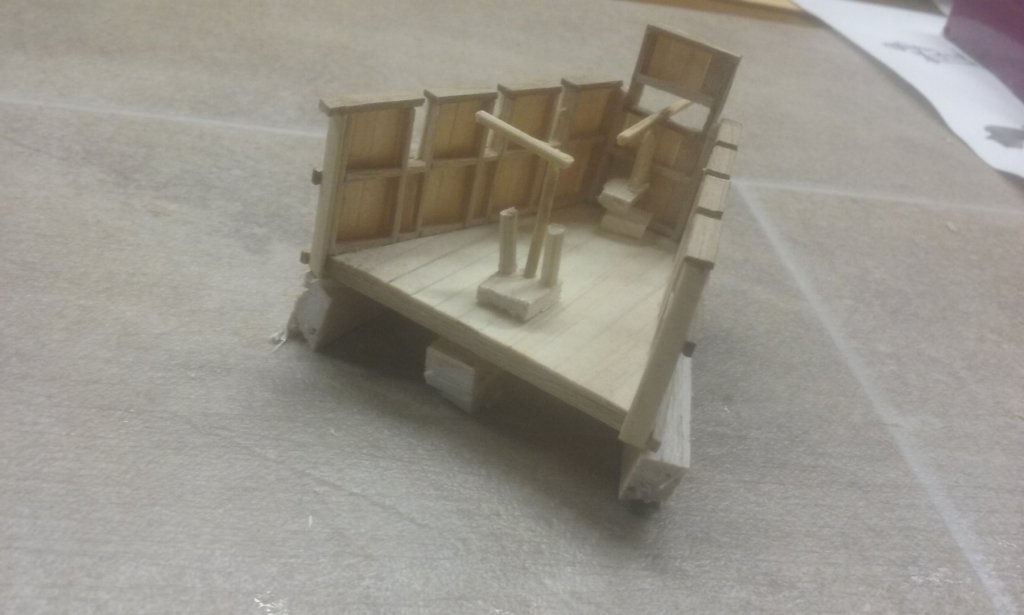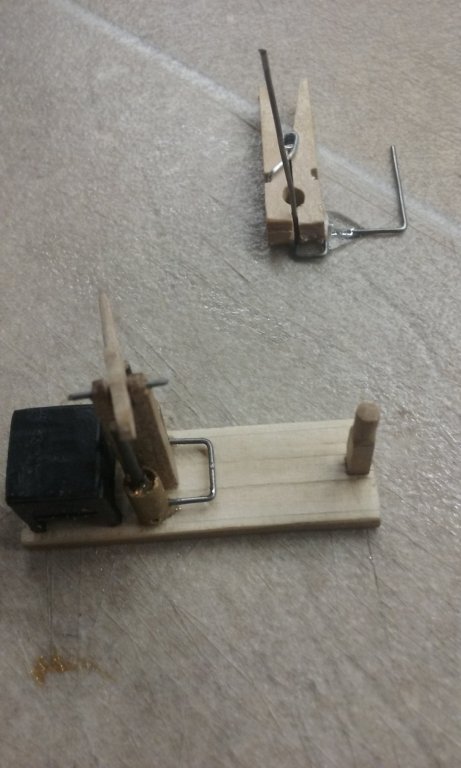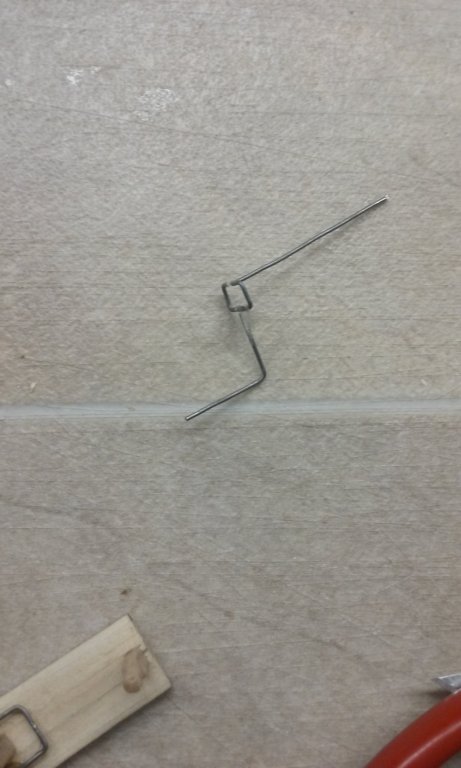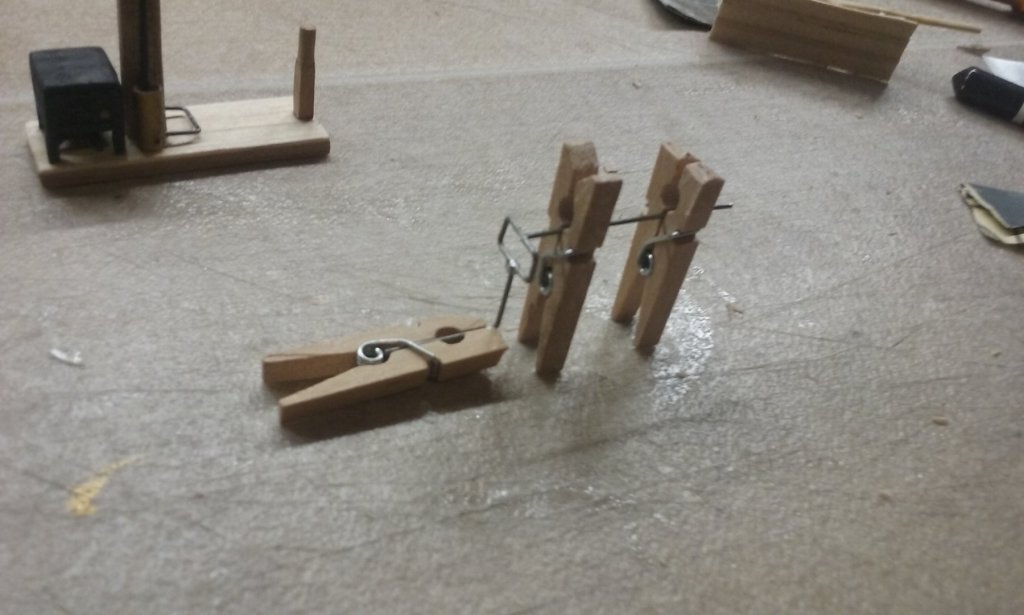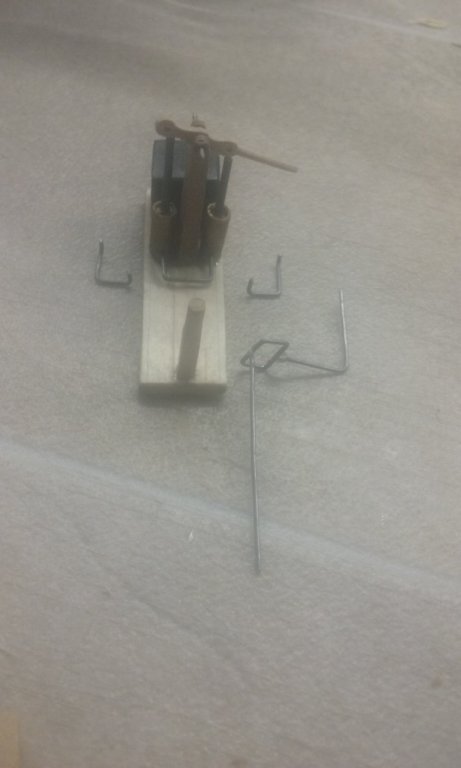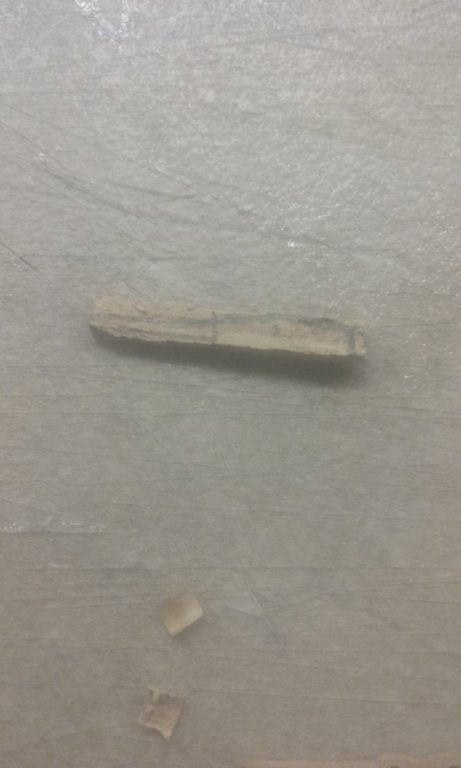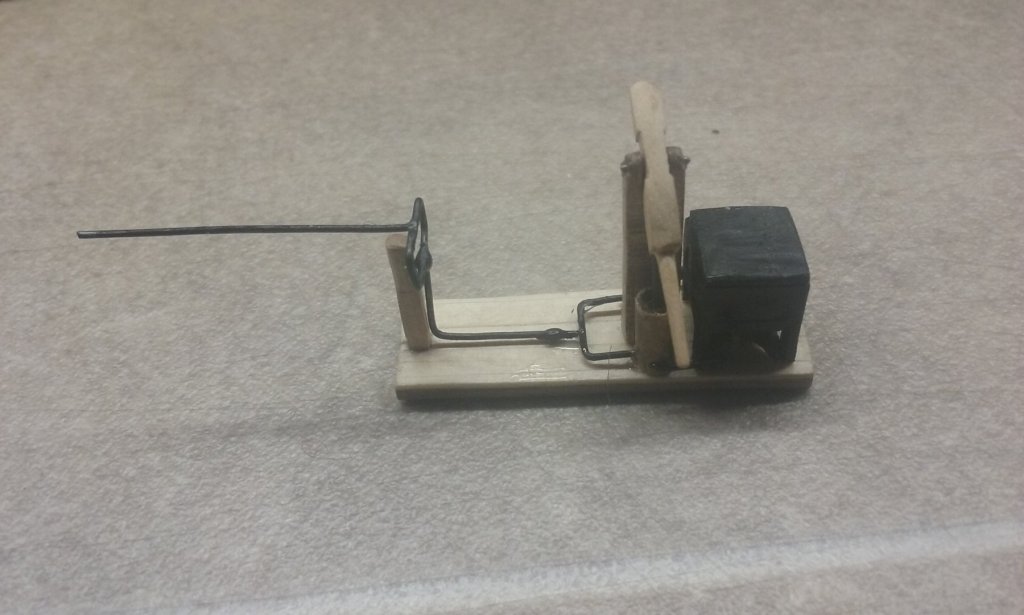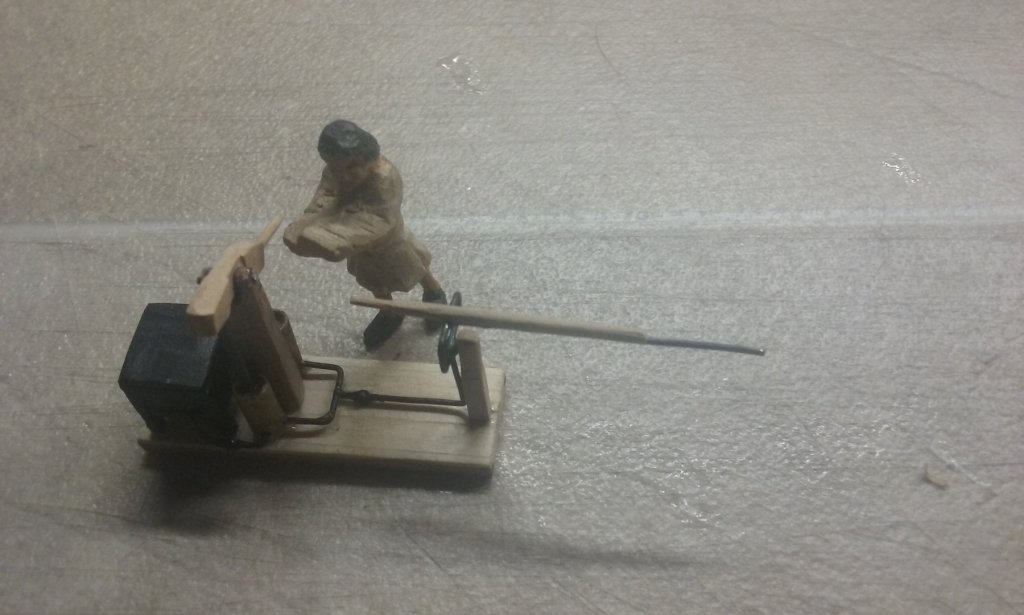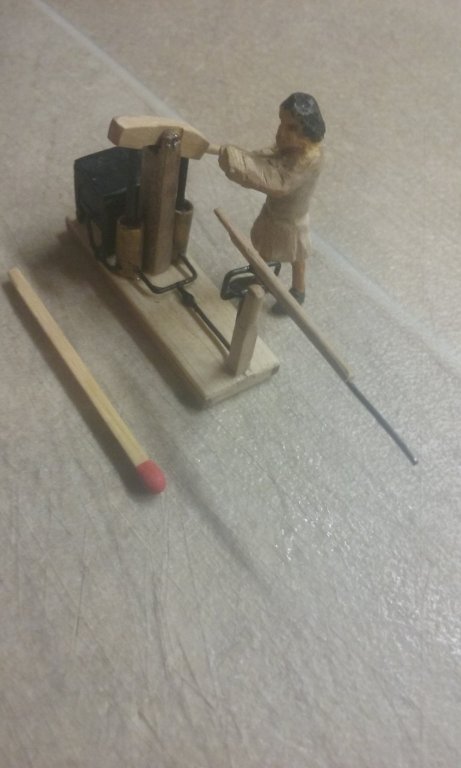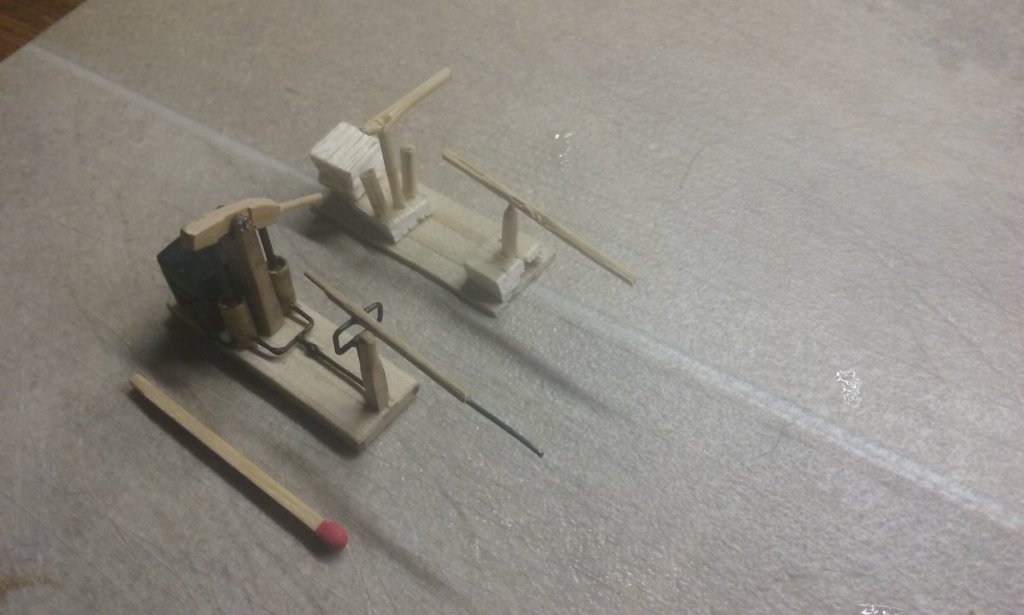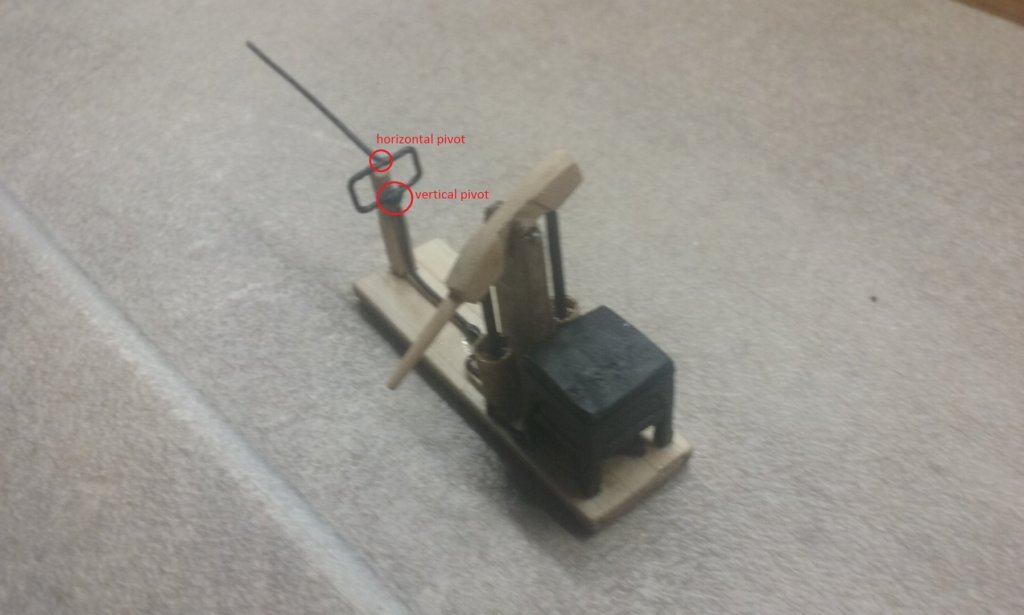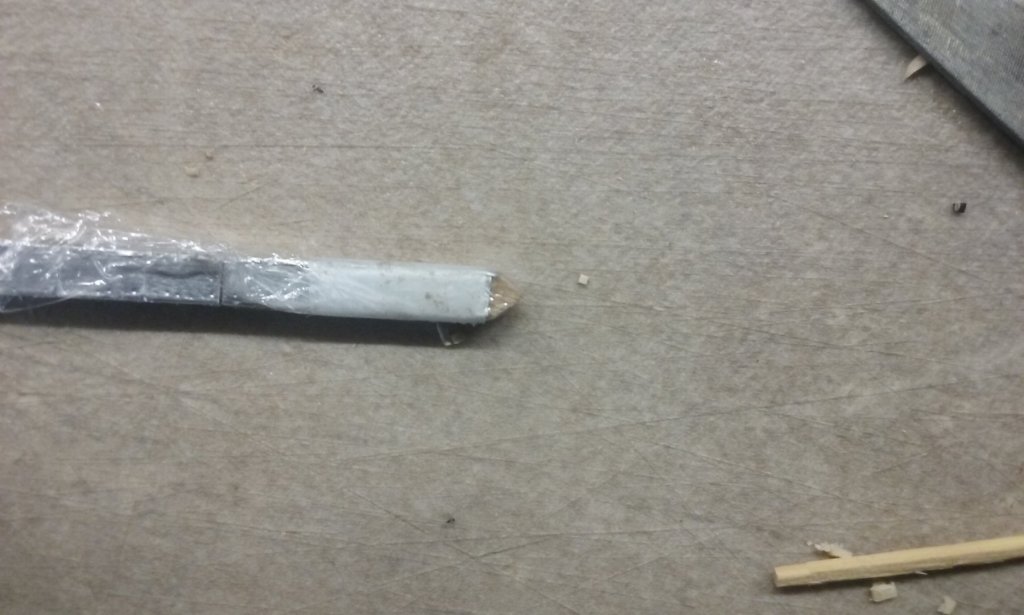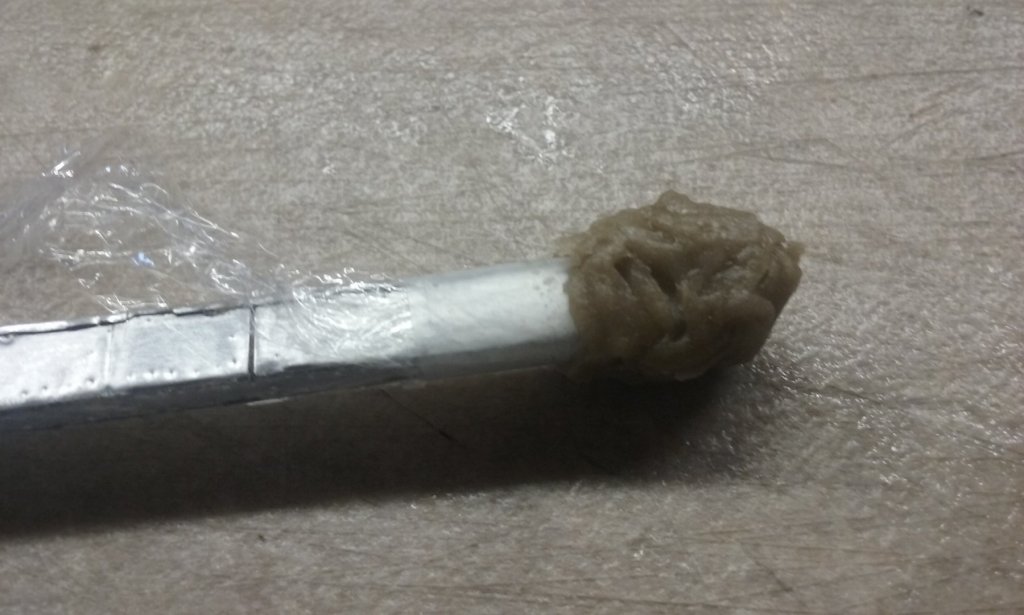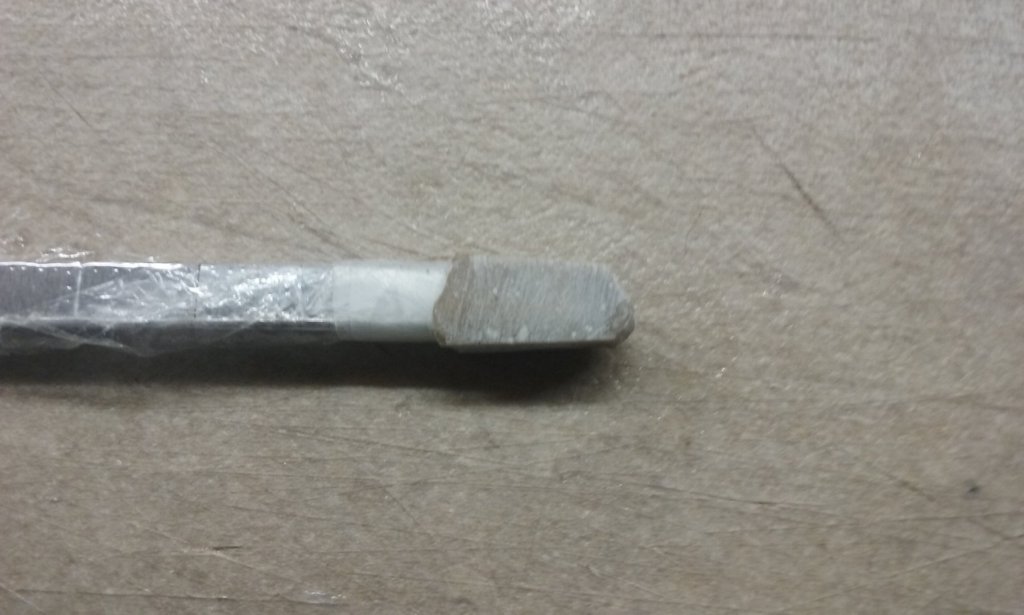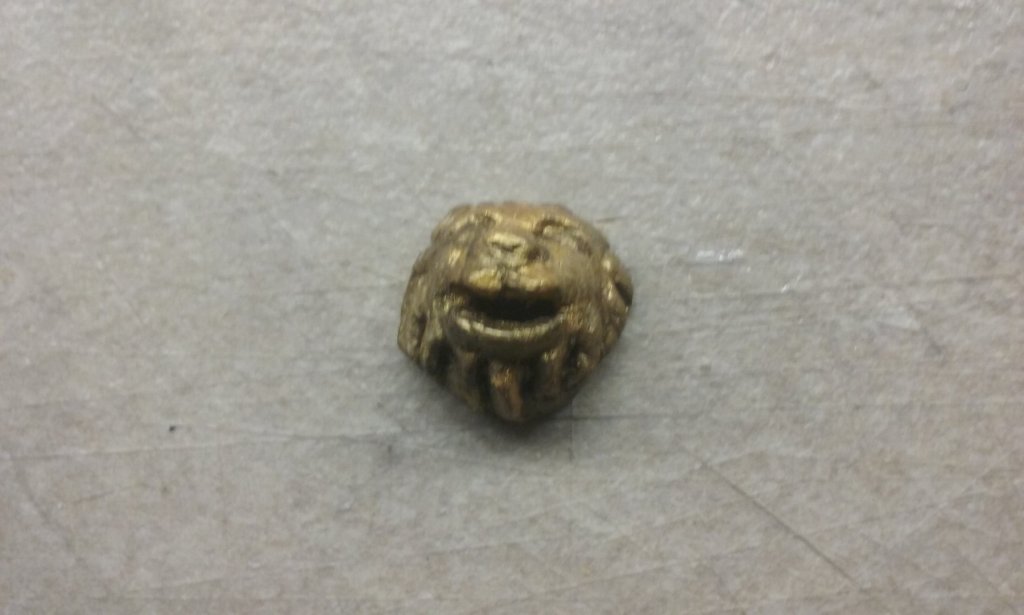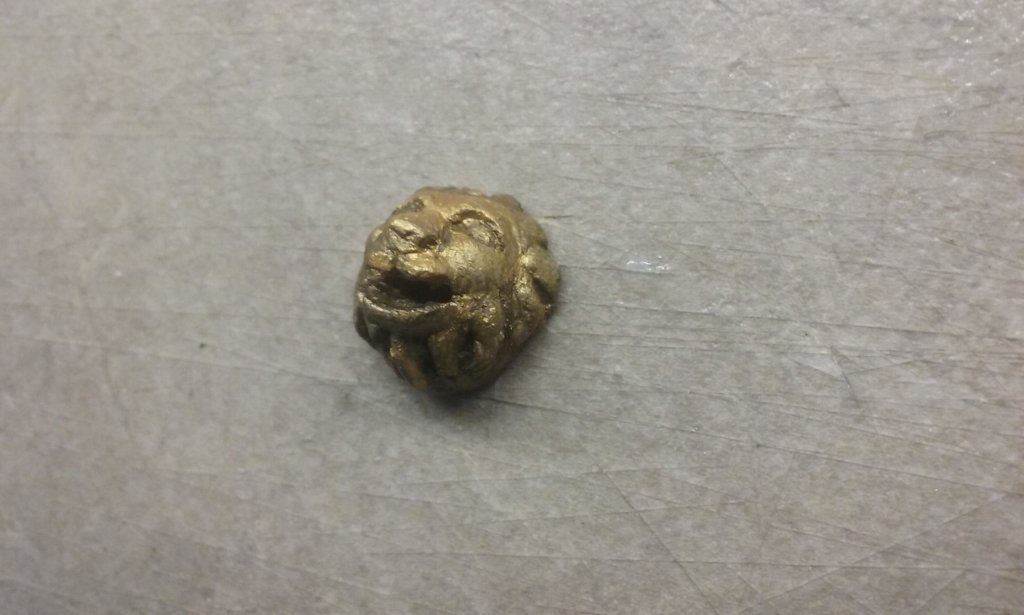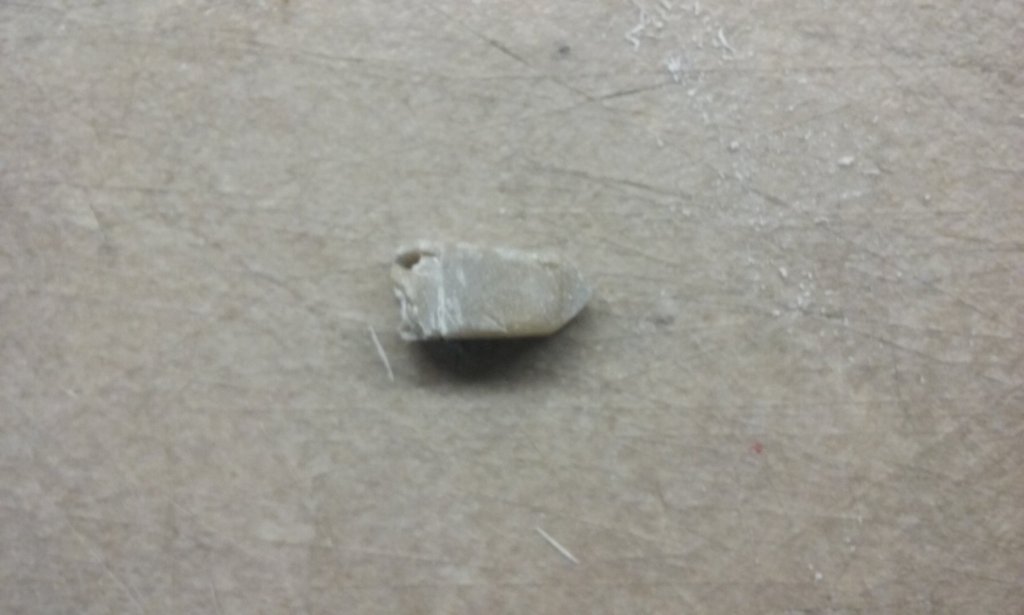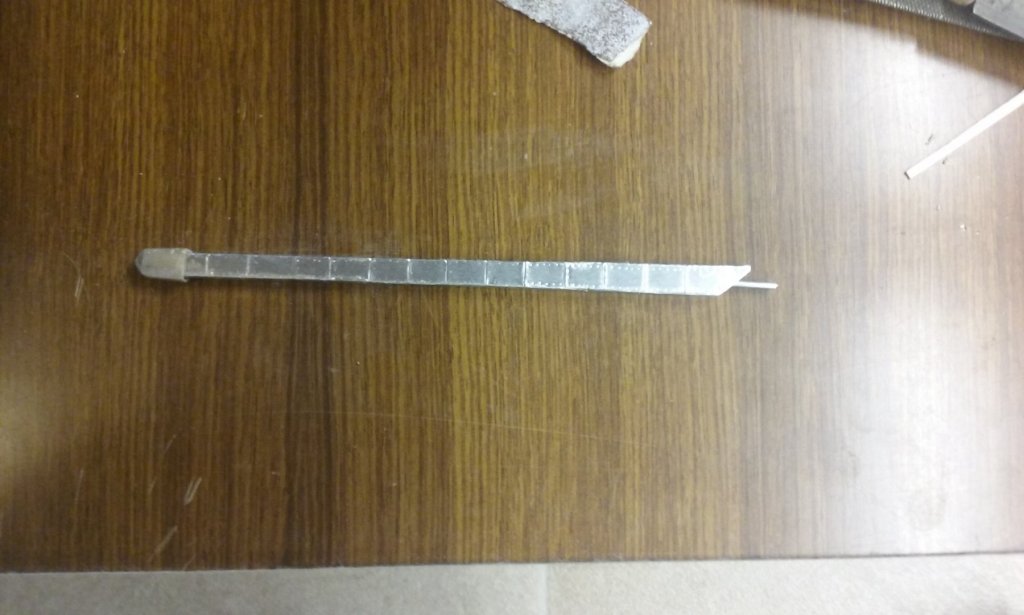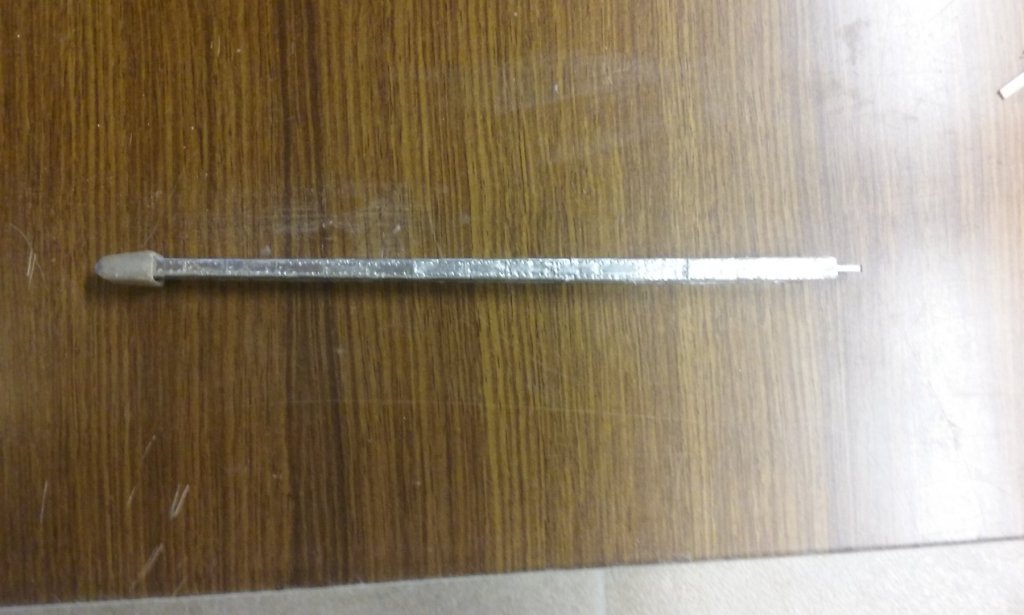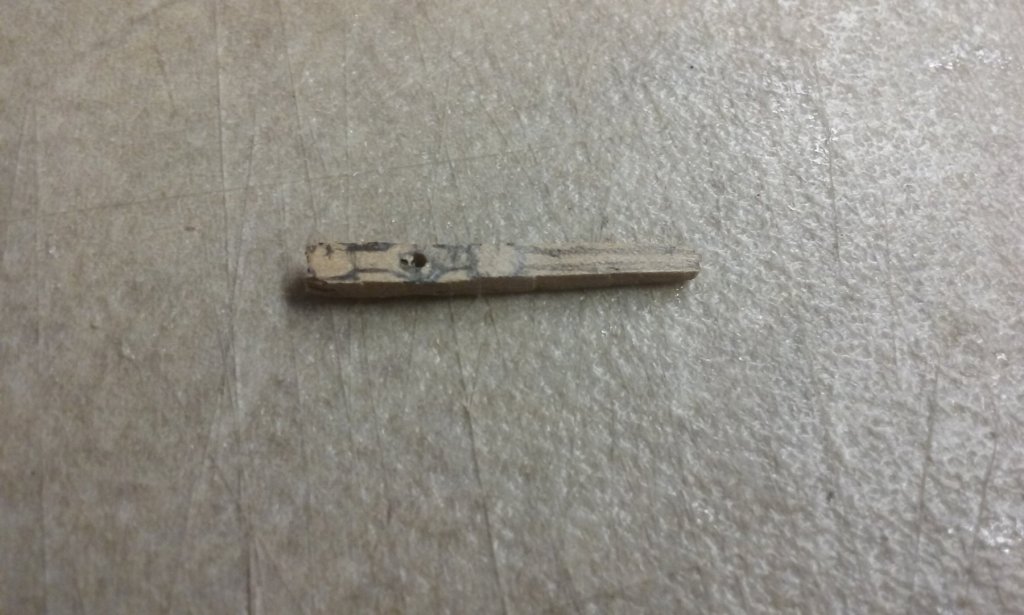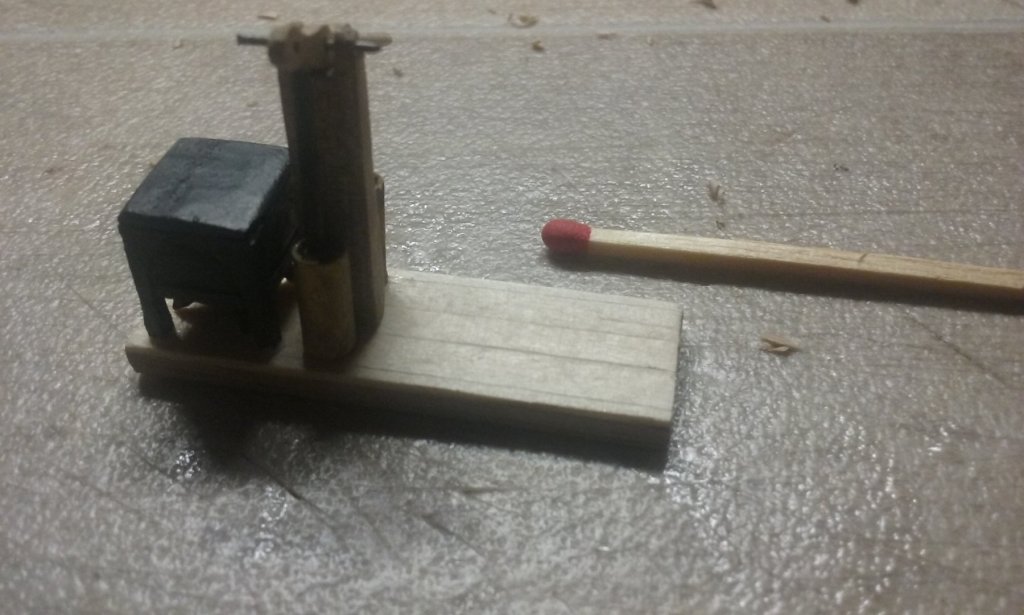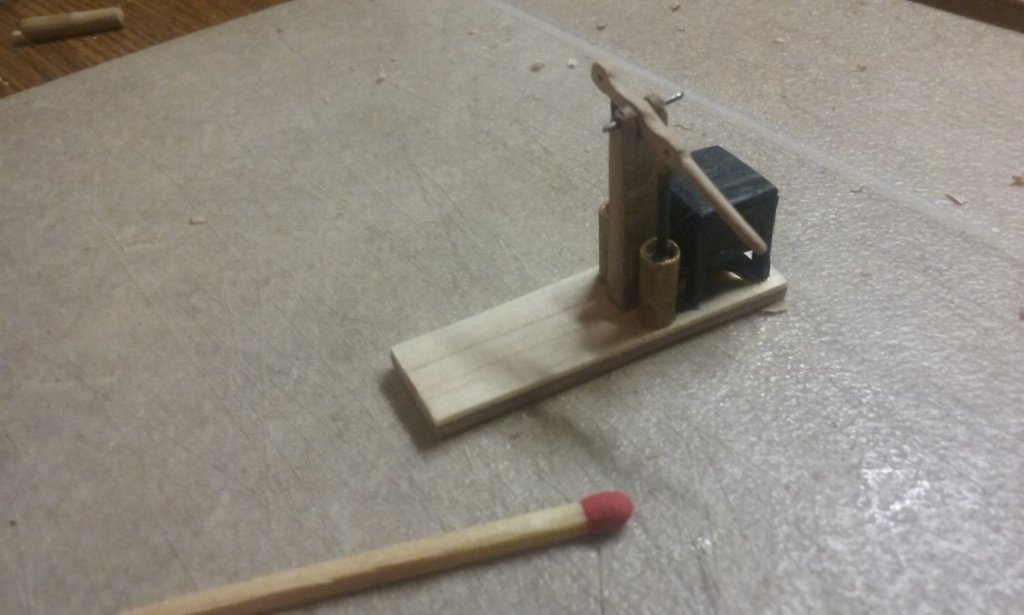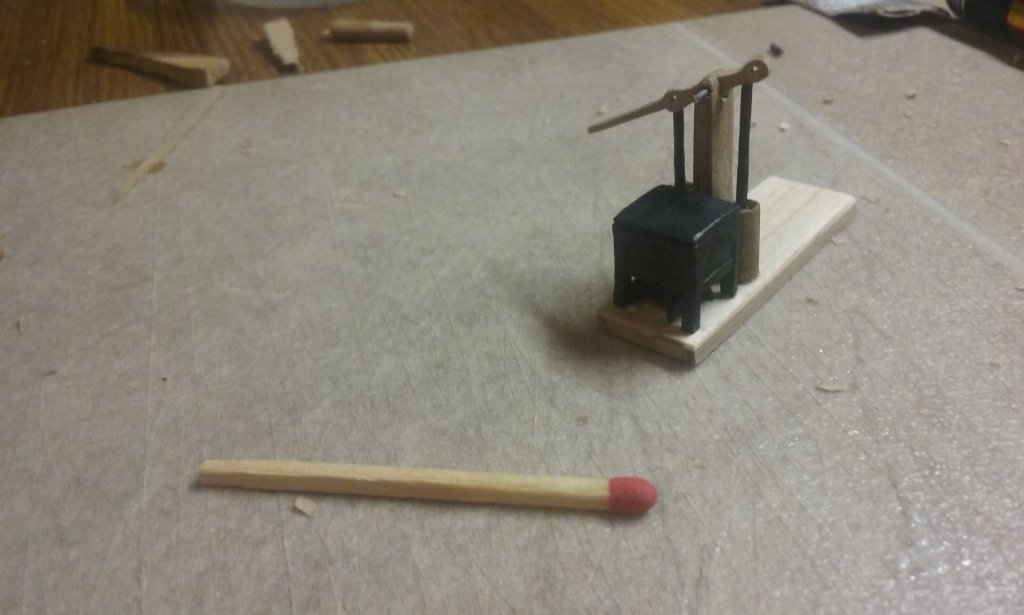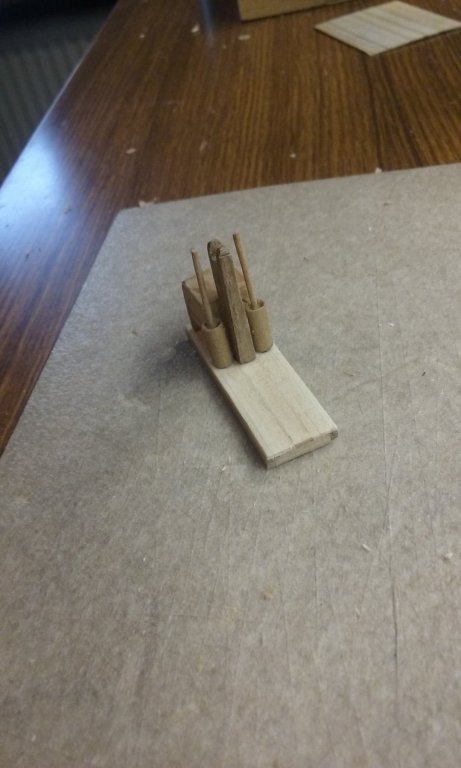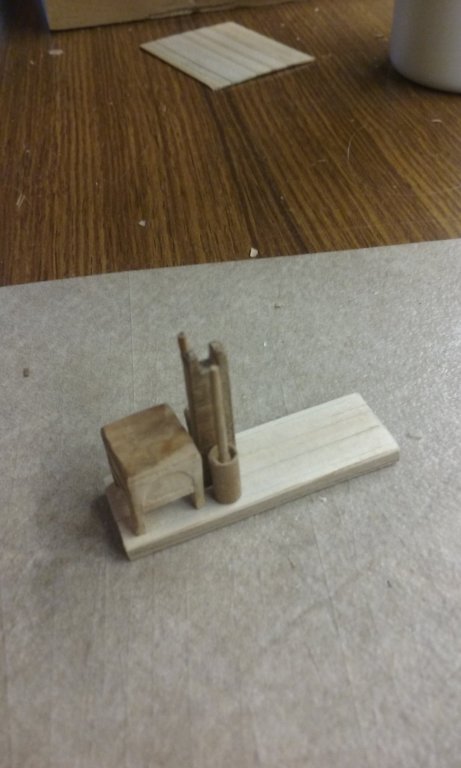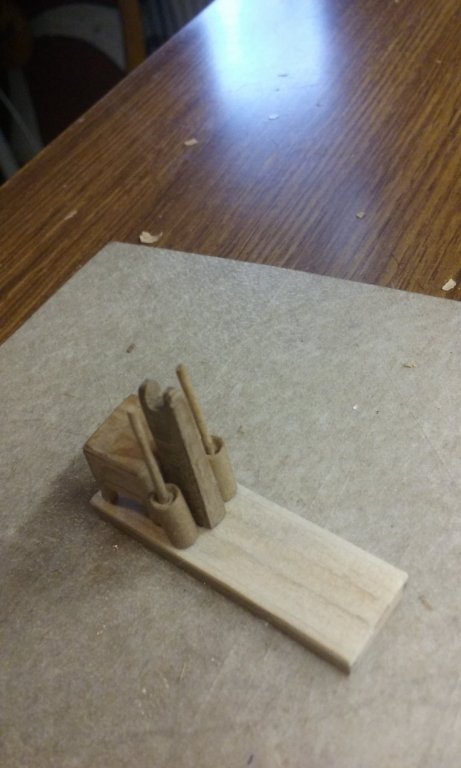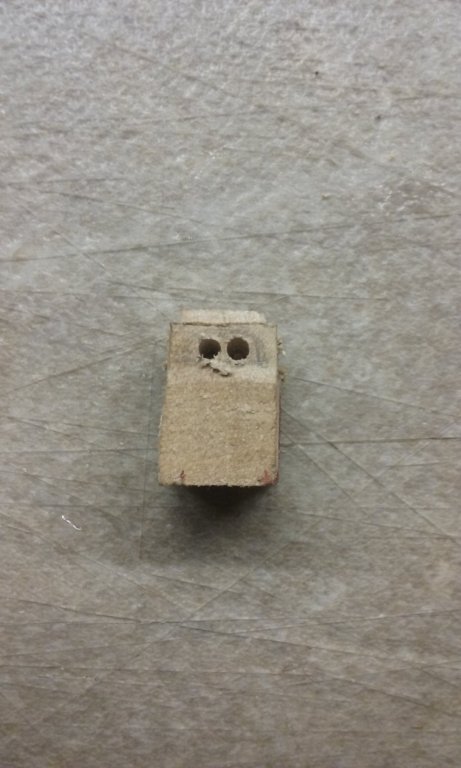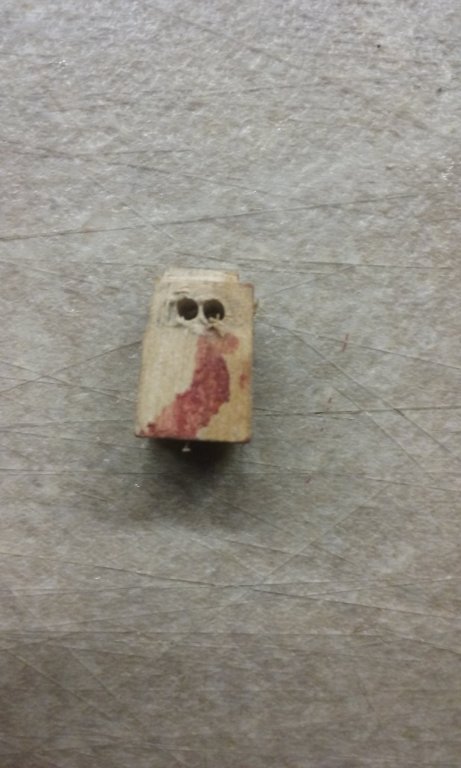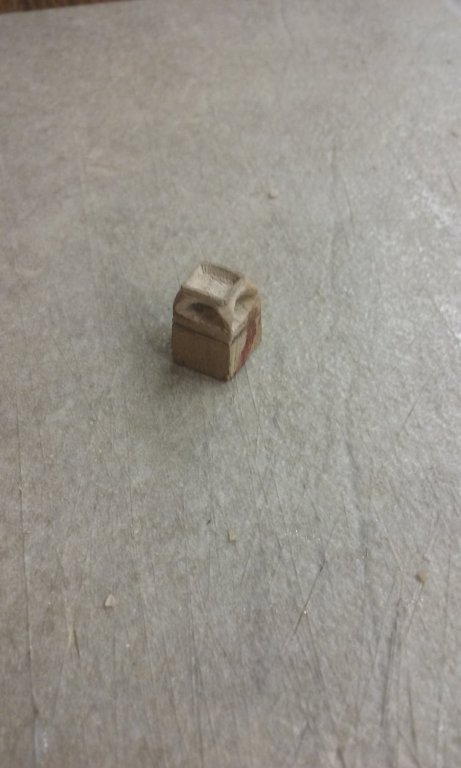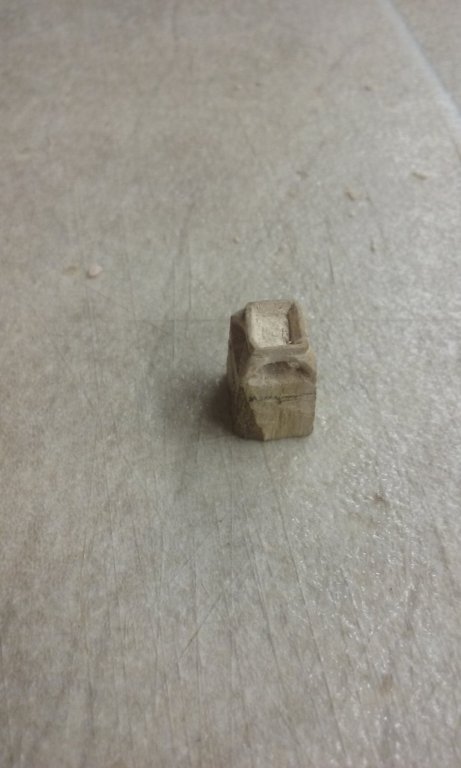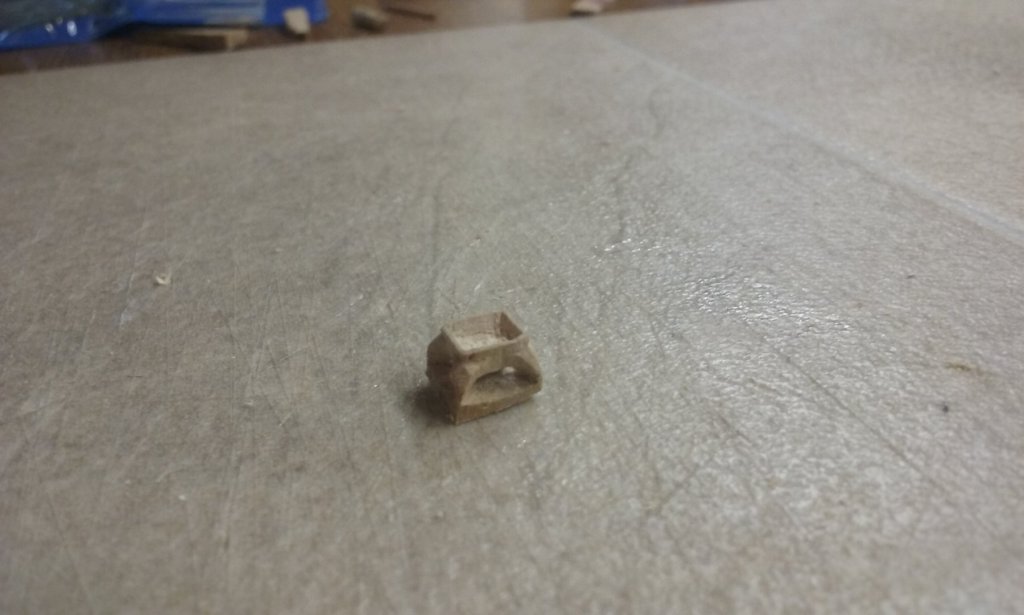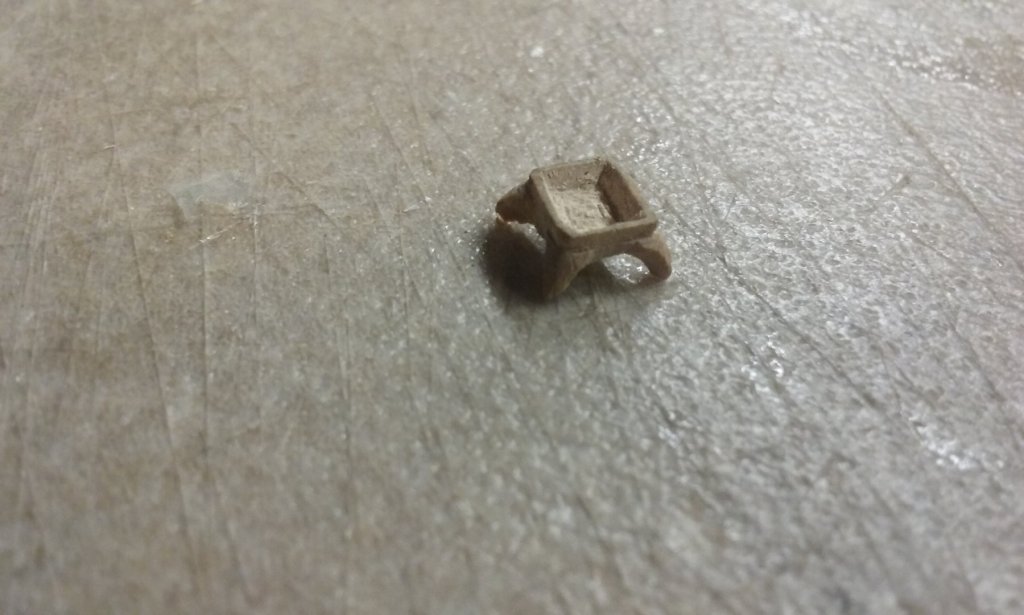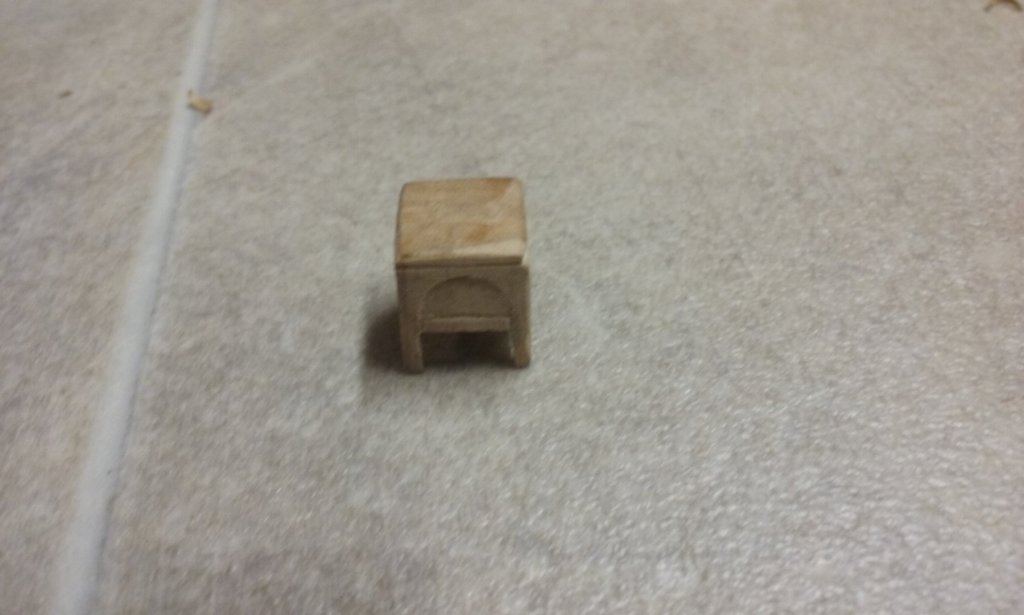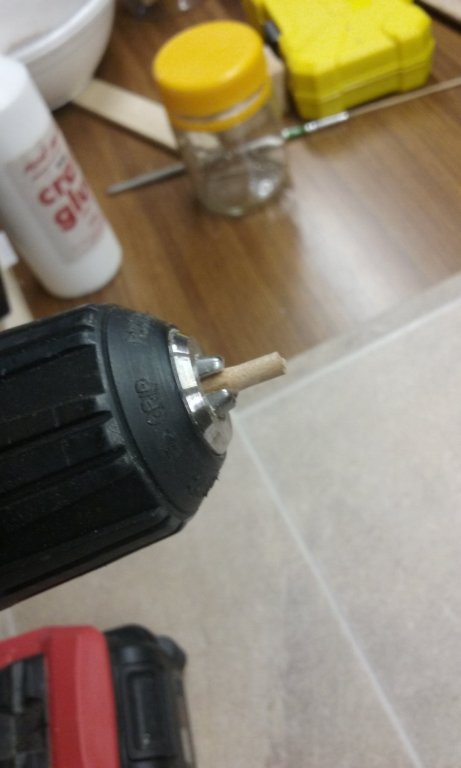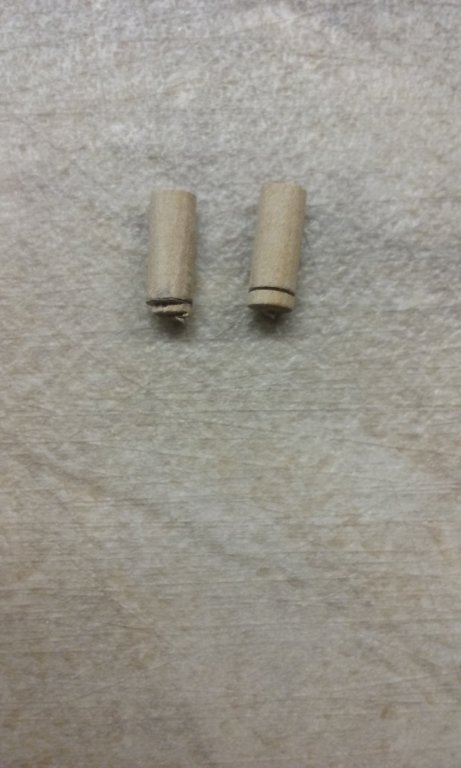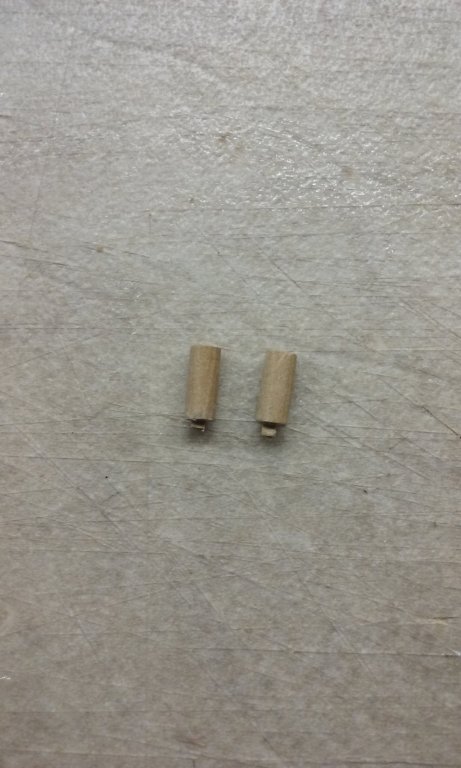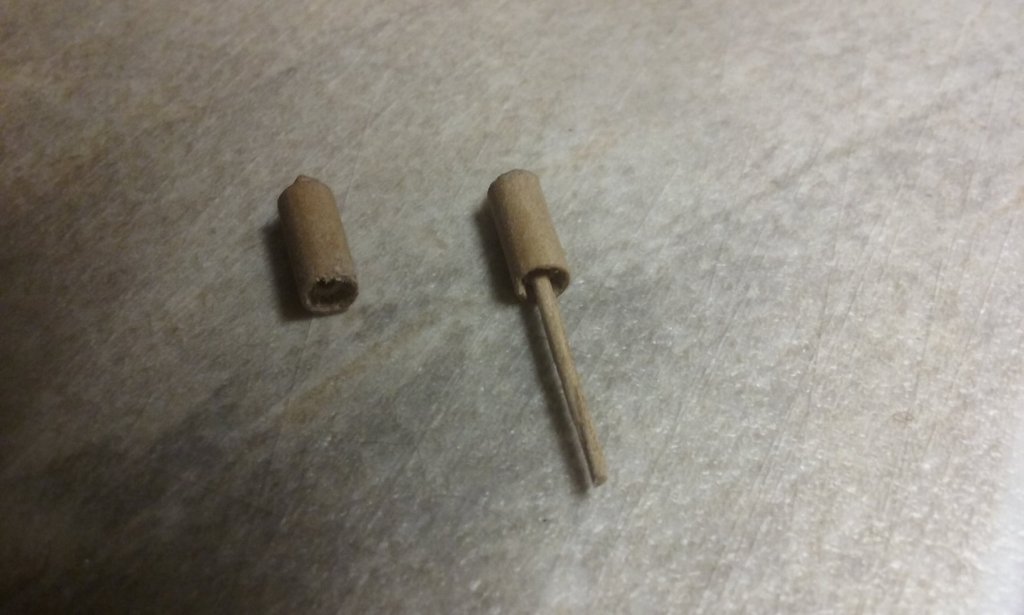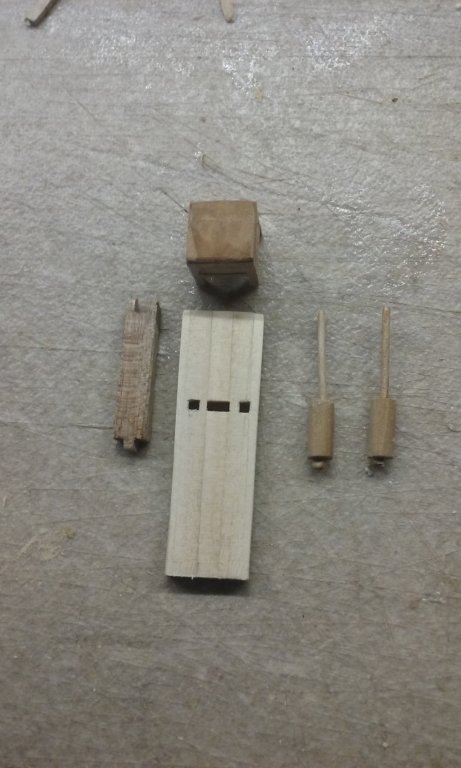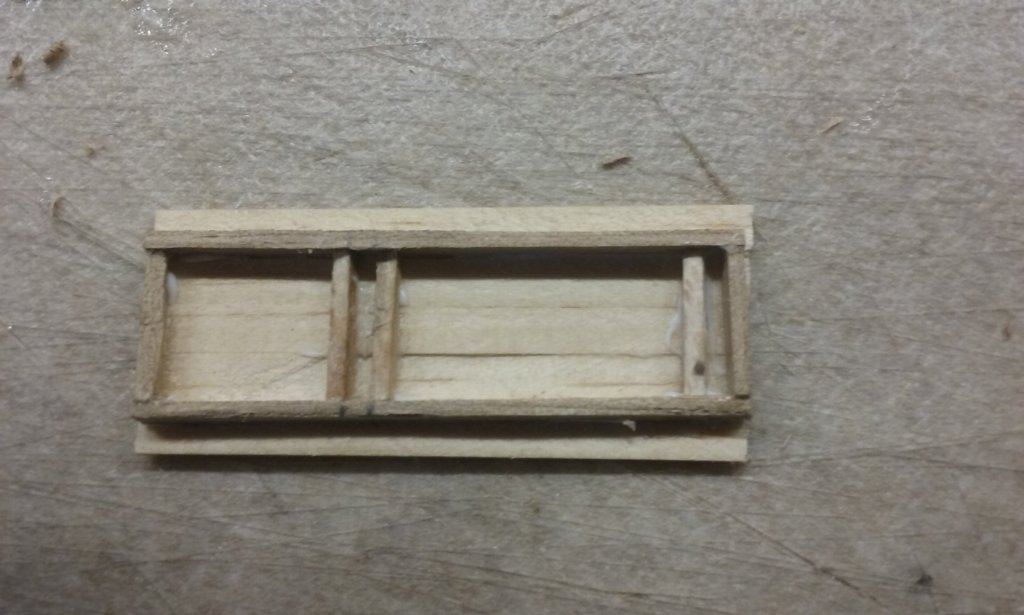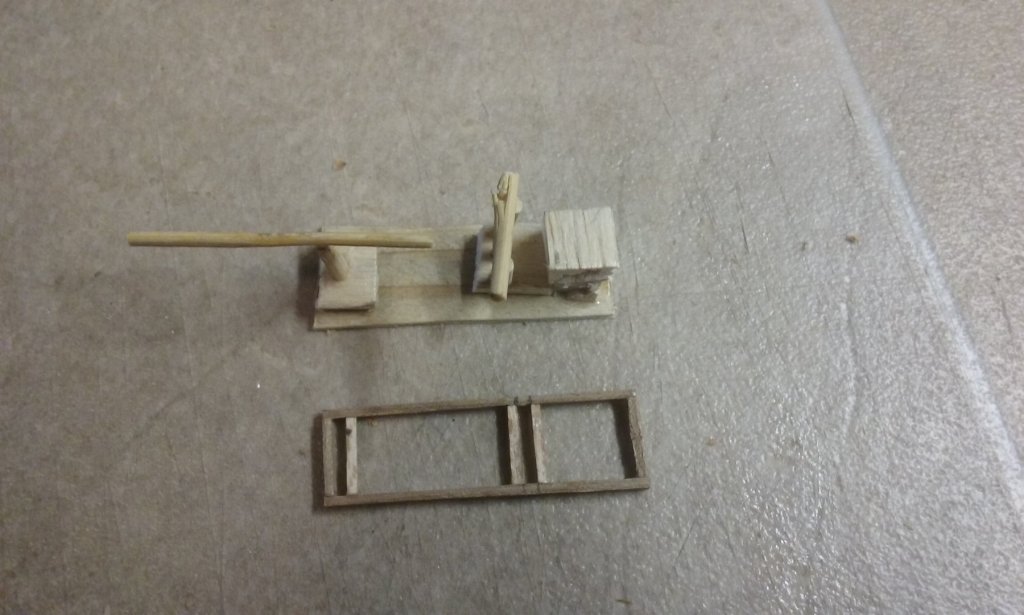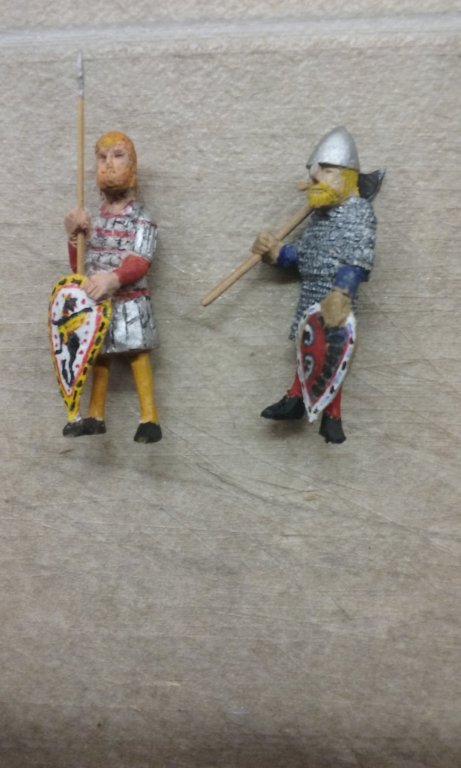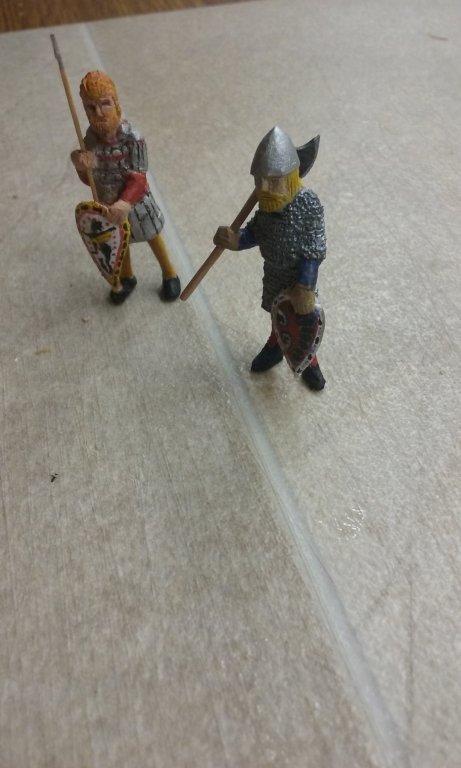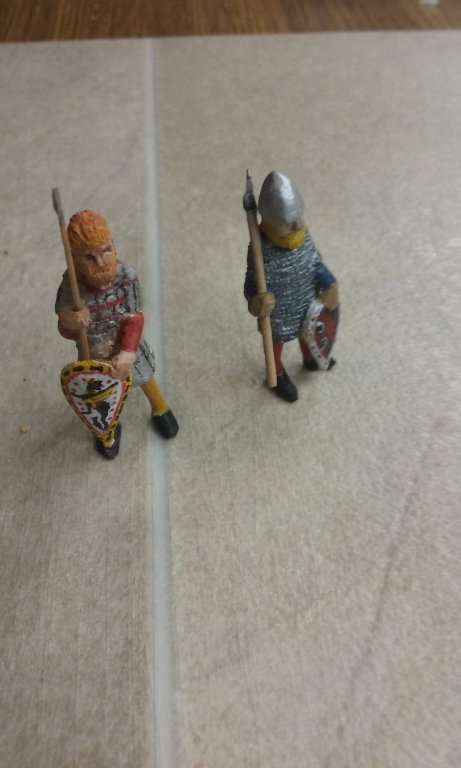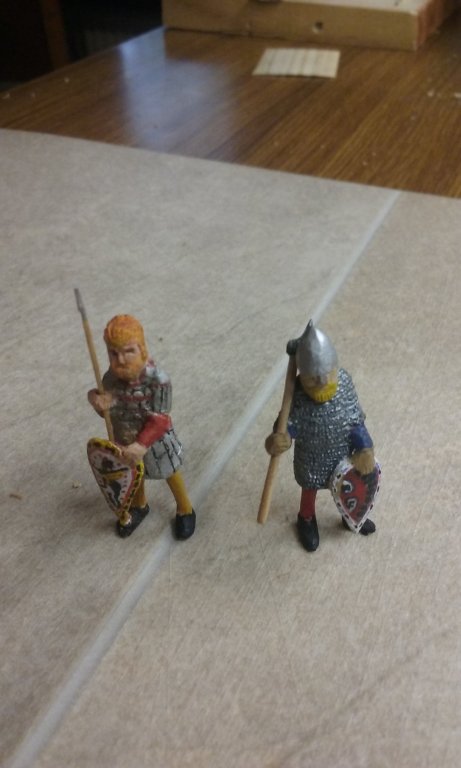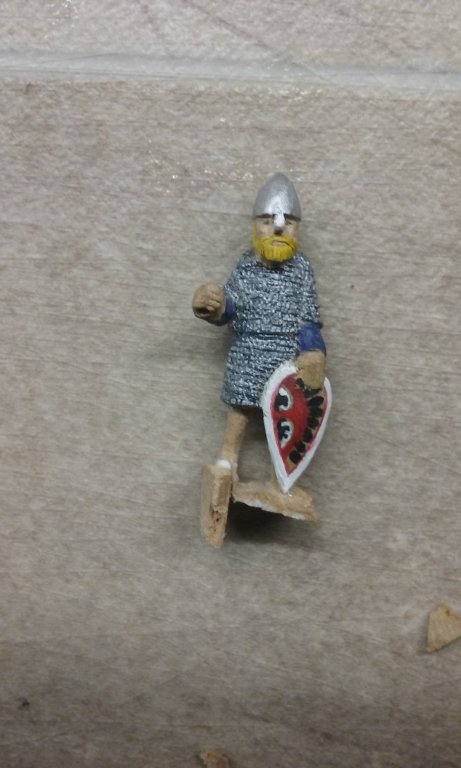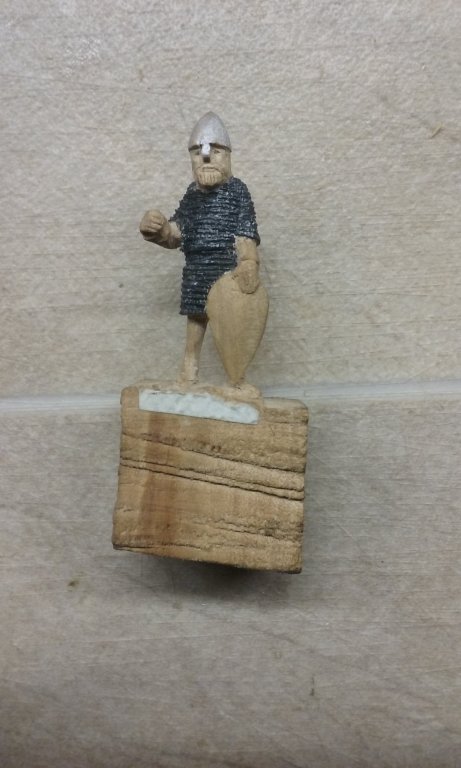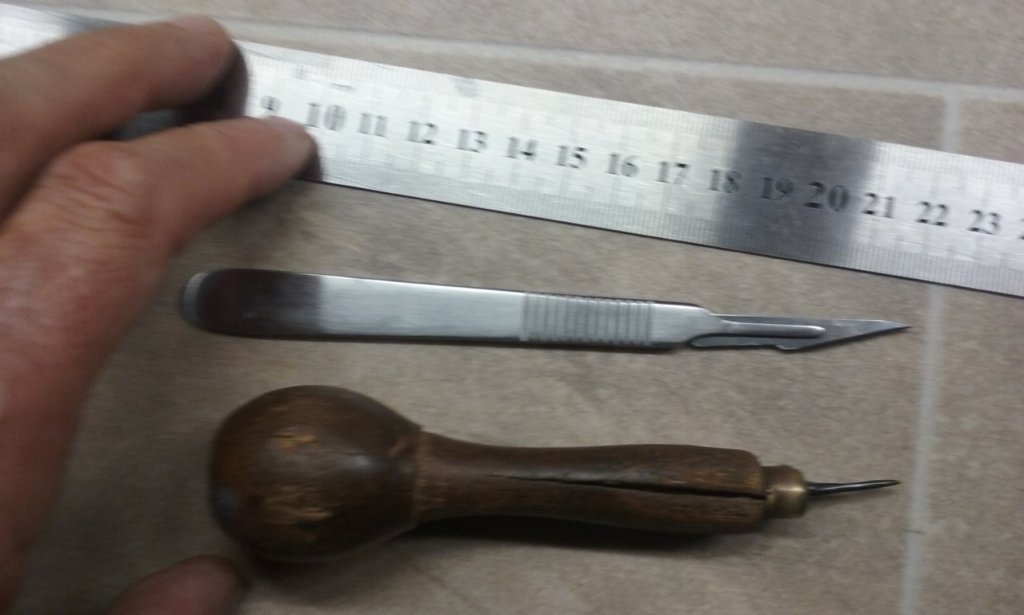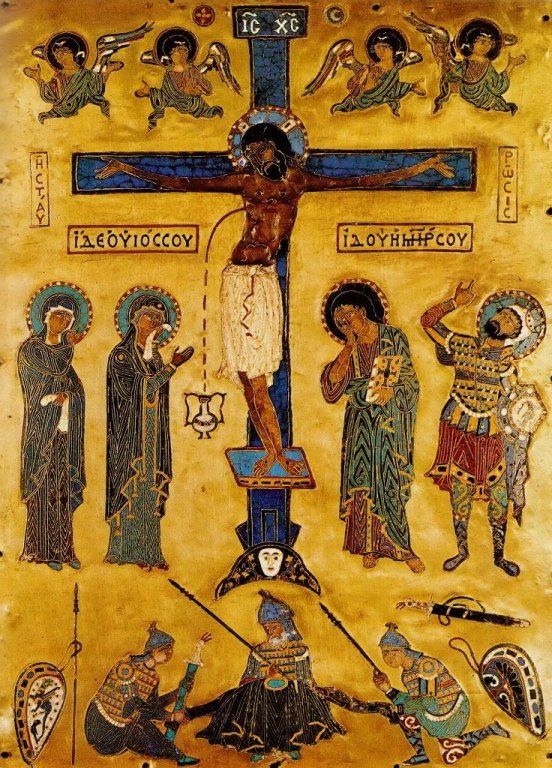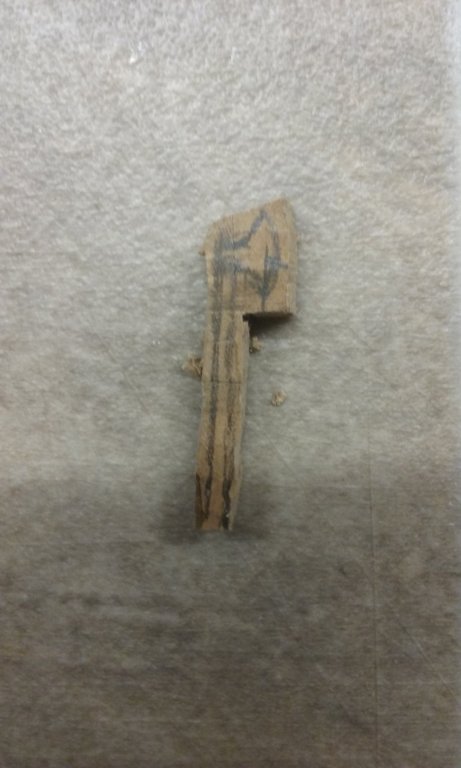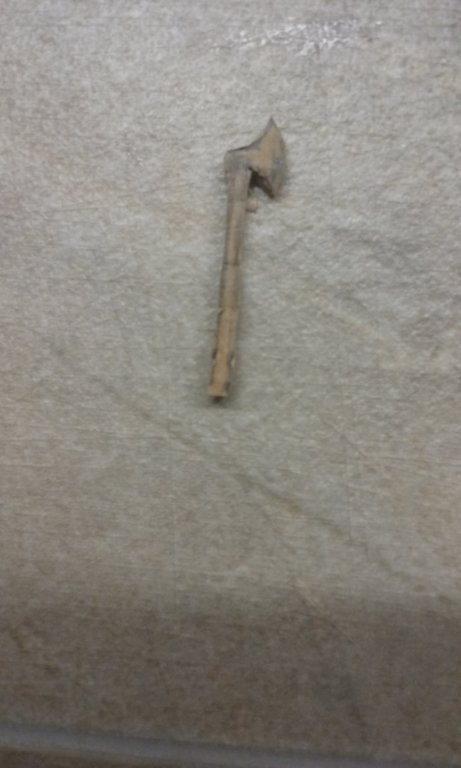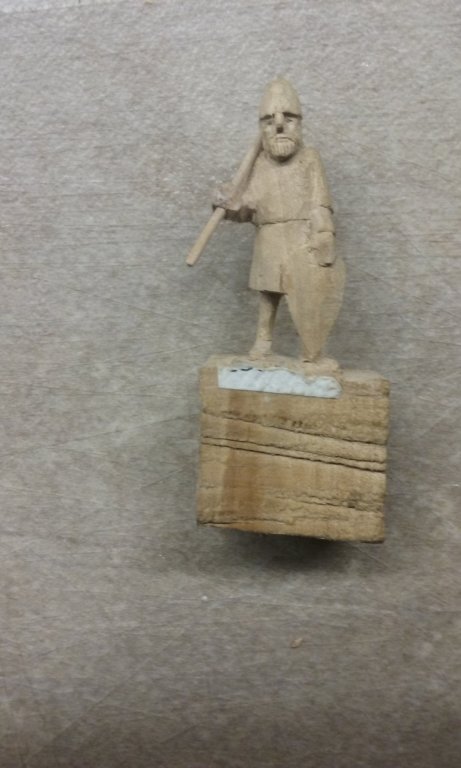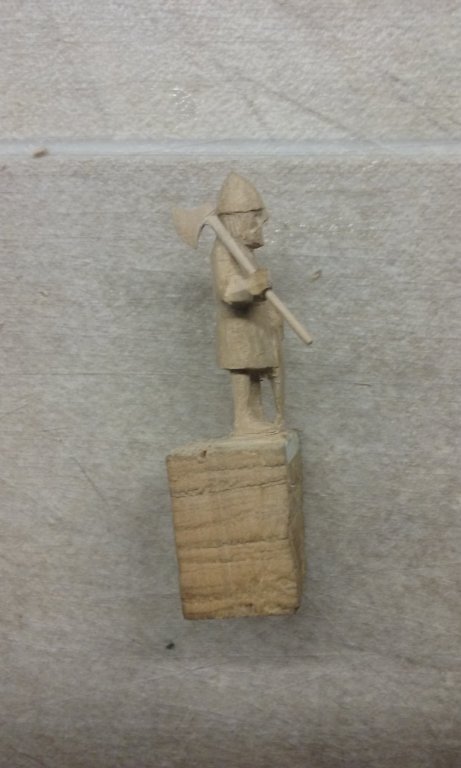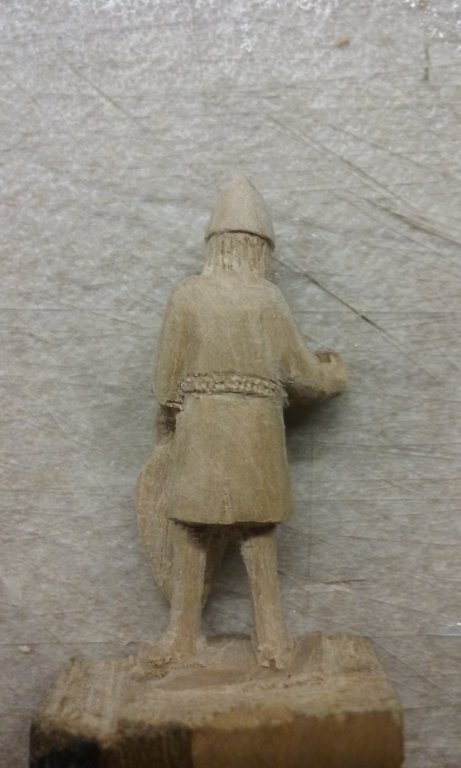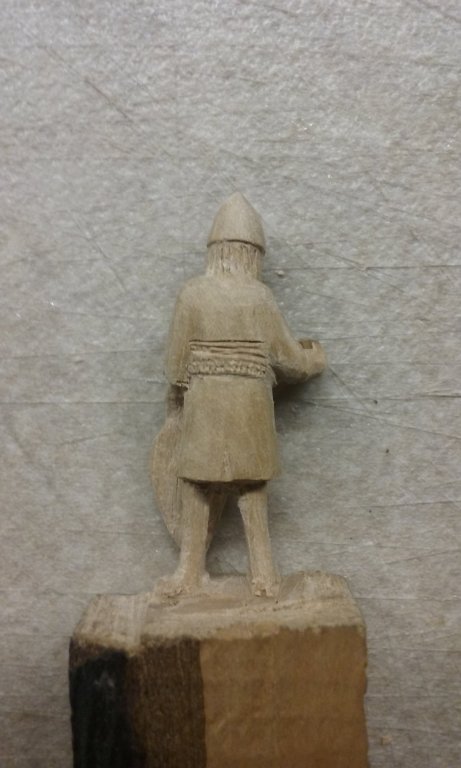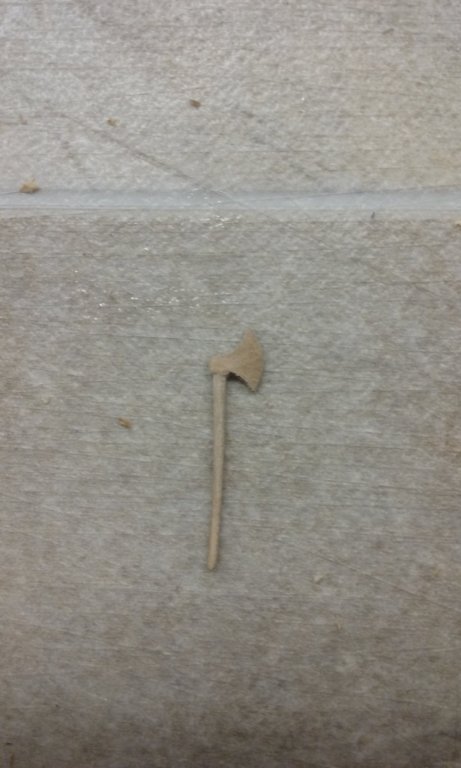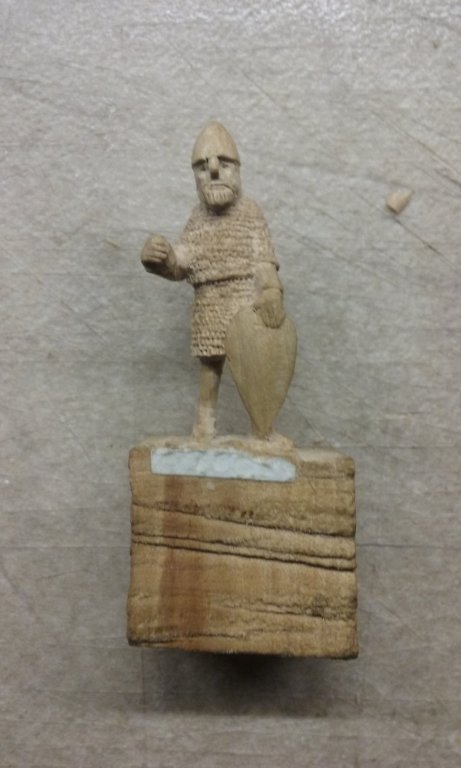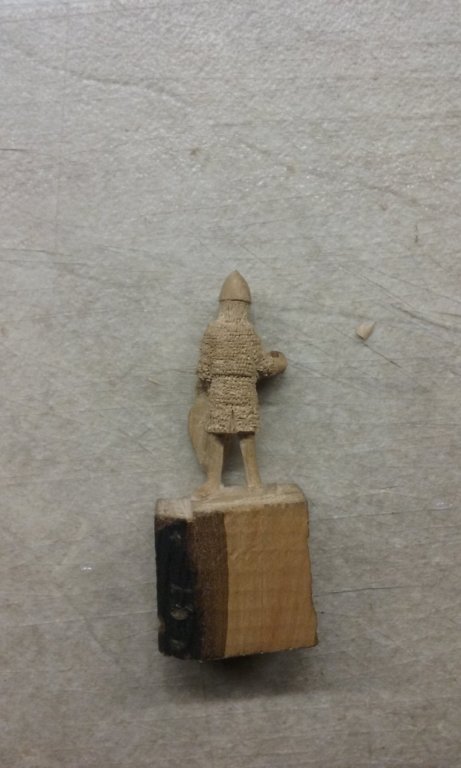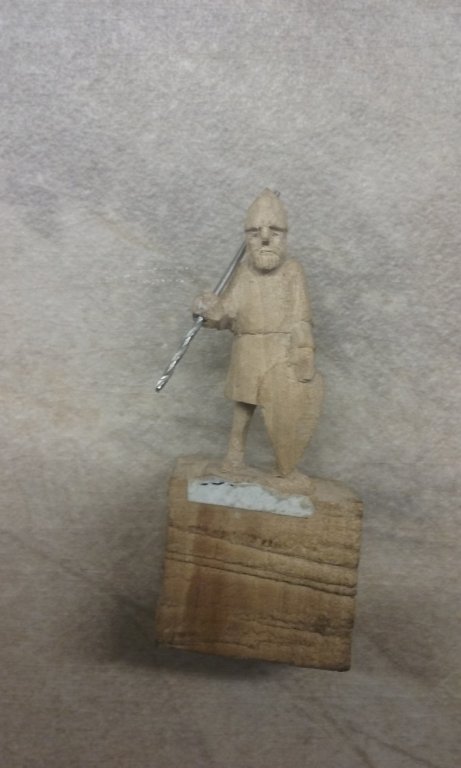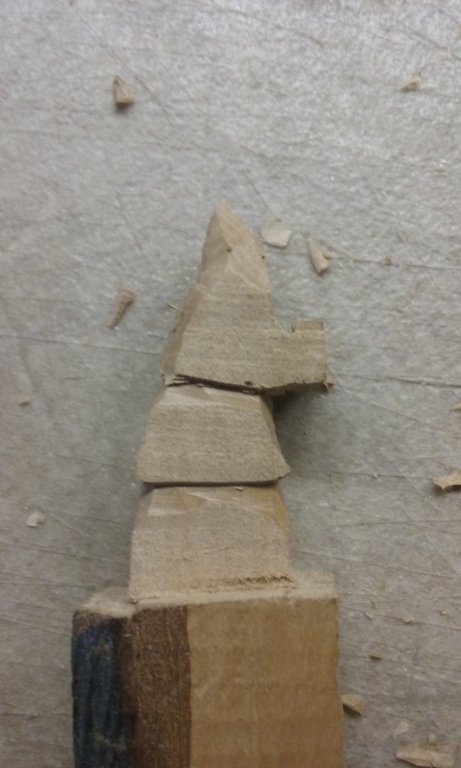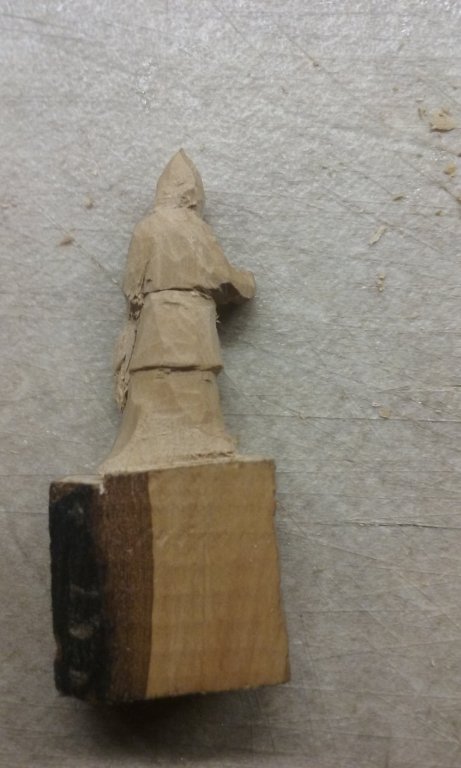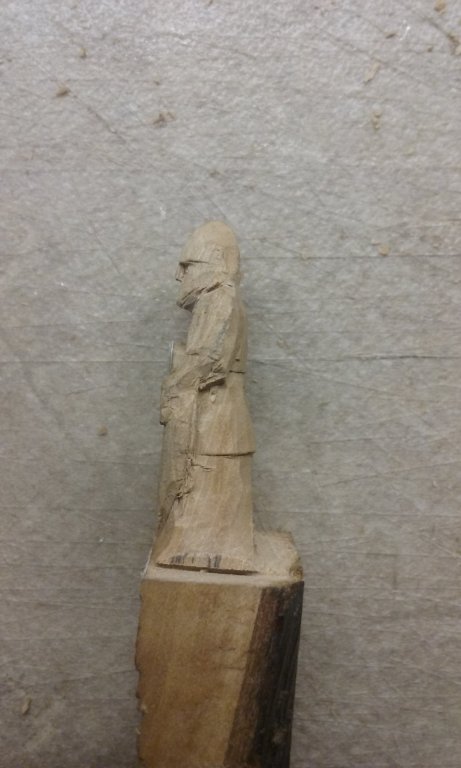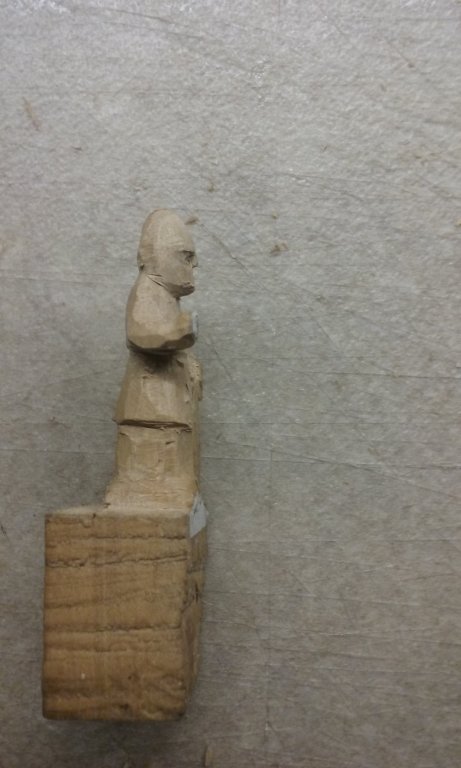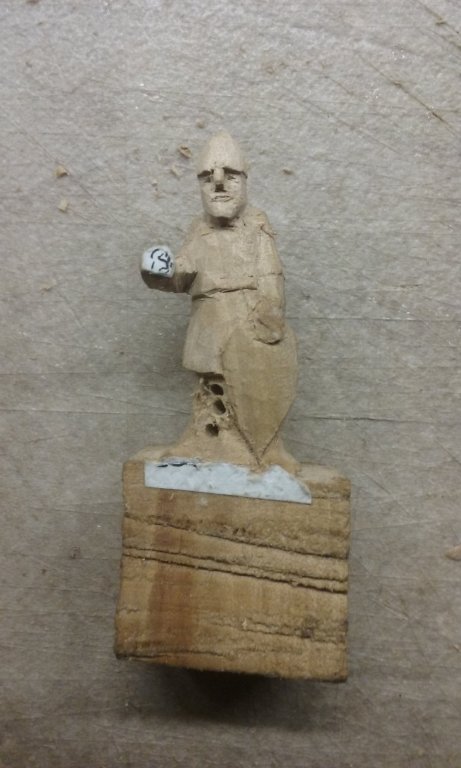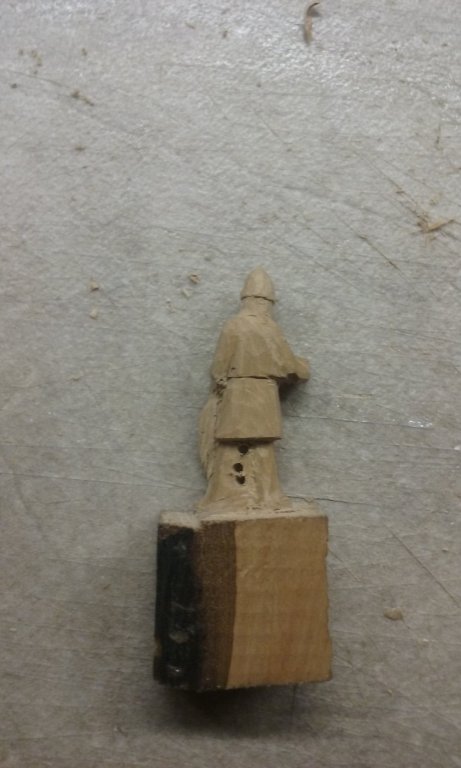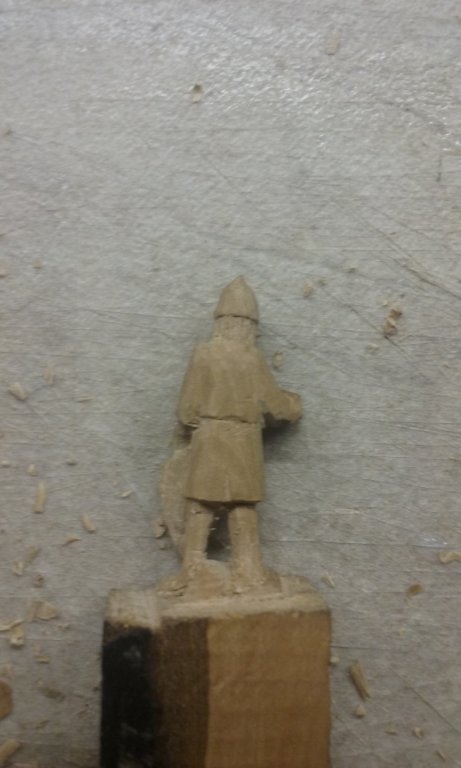-
Posts
7,989 -
Joined
-
Last visited
Content Type
Profiles
Forums
Gallery
Events
Everything posted by Louie da fly
-
In the process of making the siphon a permanent feature of the ship, rather than a self-contained unit. First I've put fake bronze cladding on the raised portion of the forecastle's fore parapet. I used the thin aluminium sheet from a can of cat food and will paint it to resemble bronze. Note also three attempts to duplicate the "rectangle" of pipes I made for the first version of the siphon. Isn't always the way, I got it right really easily the first time but had no end of trouble trying to do it again. In the end I pulled the original siphon apparatus to bits and re-used the bits I'd made the first time. Sticking the cladding on with epoxy. Not totally happy with it - it's still a bit rough and ready compared with how I wanted it. I guess to really get on top of it I just need to do lots more practice working with sheet metal at a small scale. And in the meantime be satisfied with what I've done at the current level of skill. Inserting the pillar to support the "pipe" riser, and cut holes in the deck for the pump assembly. The pump in place - compare it with the photos in my previous post. In these photos the sheet cladding isn't fully glued down yet. I think this works better. Considerably more deck room. Note in the final photo the pump handle up against the upright containing the pivot. There's one in the previous photo on the other side of the unit, but it doesn't show up well. The handles are glued in place but I think I'll have to make some sort of clamps or fittings for them. Steven
-
Beautiful work, Dick. The hull has really taken shape well. Regarding the side rudder, I take it you already have the TAMU paper on the development of rudders/steering oars? Steven
- 263 replies
-
- nave tonda
- round ship
-
(and 2 more)
Tagged with:
-
That's amazing Yancovitch! I've got 50 oarsmen to make for my dromon and I was intending to cast them, but with almost no experience at all I was not looking forward to it. This site is a tremendous resource! Many thanks. Steven
- 73 replies
-
- mediterranean
- galley
-
(and 1 more)
Tagged with:
-
I've raised the level of the gap for the siphon in the forecastle parapet and added an extension to fix the lion's head to as well as acting as a shield against the heat of the flame. I've also been having second thoughts about the siphon. My original plan was to have the oil reservoir at the break of the forecastle, below the deck, with pipes coming up through the deck to the pump. Then presumably the pipe/s would go under the deck and up to the siphon. I hadn't really thought about it past that, then I saw the videos and made an apparatus that followed their design. But now I'm thinking of revisiting the original idea. It would make for a much less cluttered layout - the forecastle turns out to be rather short of space - and if I don't try to fit everything together as a single apparatus the pipes could be longer so the pump could be further back on the forecastle where it's wider to allow for more room for the rest of the marines using the forecastle in battle (if that's what they did when the siphon was in use!). Here's the current layout And here's what I have in mind: Additionally, it's occurred to me that the pump could have two handles if they were removable, as on a capstan. That would mean the pump could be a permanent fixture on the forecastle and hardly get in the way at all, and having two handles would allow for more efficient pumping. I haven't fully decided whether I'd make a new apparatus from scratch or re-use the pieces I've already made. Steven
-
A few points to note: The videos make it very clear that this was a fairly short-range weapon and that it would only work if there was either no wind or a following wind - otherwise the flames would be blown back onto the ship itself. I forgot to mention that I painted the pipes black to simulate pitch, as sealing the joints seems to have been a major issue and the Haldon people used the traditional medium to seal them. Windler seems to have overcome the problem by covering everything with some sort of extruded stuff - it's hard to see from the video what it is, and the issue is not mentioned in the voiceover. Steven
-
Oh, don't be fooled. That's my 1 metre long match. I got it from IgorSky 😀. Thanks everybody for all the likes. Unfortunately I've now found I have to do some adjustment. The nozzle was too long, so I've cut it back a bit, and it's also going to be higher than I thought so I'll have to adjust the forecastle so the parapet and the lion's head are higher . A bit of a nuisance, but I think it's inevitable with so many variables that can't be related to each other until it's time to put it all together. Steven
-
The siphon is complete. I've been concentrating on the pipes to deliver the oil from the reservoir to the pump and thence to the nozzle. Made from thin wire, I first made the "pipes" forward from the two cylinders. In the background, my first (failed) attempt to join the riser pipe to the nozzle assembly. Second (successful) attempt to attach the riser to the nozzle assembly. I made a jig from three miniature clothes pegs and added a dab of epoxy glue between the pipe "rectangle" and the riser. And here's the completed assembly Then the pipes between the reservoir and the cylinders. Wasn't happy with the pump lever, so I decided to make another, with openings on the bottom for the connecting rods. Three attempts later I finally got it right. Roughing out Lever in place, and riser/nozzle assembly attached to the pump. Note the "blobs" on the pipes between the reservoir and the pump, and between the pump and the riser. These are to represent one-way valves in the pipes, to stop the oil flowing backwards once it's pumped forward. And the handle to control the nozzle. As you can see, the whole assembly should be able to be handled by one man, as demonstrated in the Richard Windley video. And here is the completed assembly compared to the roughed-out model I did before starting. Pretty happy with this, though looking at the photos I see the nozzle is a little out of line at the front. I suppose I should fix it. Steven
-

Hello.... I am new here to the forum
Louie da fly replied to mfrazier's topic in New member Introductions
Welcome to MSW, Mark. I second vossiewulf's advice. A relatively simple model to start with is a good idea - though you have made ship models before, so maybe you already have the experience and skills needed. I look forward to seeing your build log when you get stated. Steven -
Working on the forecastle, the siphon assembly and the "business end" (iron head) for the spur. The forecastle with a slot in the front of the parapet for the nozzle of the siphon. The idea is that the nozzle should be able to rotate from side to side, and to a certain extent up and down as well. Here is the pear wood lion's head which is the housing for the siphon nozzle, painted to look like weathered bronze. I've hollowed out the back so the nozzle can stick through his mouth. The head for the spur - I'm no good with sheet metal, and neither wood nor cardboard did the trick so after a lot of pondering I decided to make it out of what we in Oz call "car bog" - bodywork filler. I wrapped the spur in cling wrap, held in place with sticky tape, so the bog wouldn't stick to the spur before I was ready. Bogged The bog filed roughly to shape and taken off the spur. The cling wrap worked a treat. Filed down to its final outside dimensions and stuck on to the spur with Araldite (don't know the generic term, but I believe it's a two-part epoxy) There's still some tidy-up work to be done on both the forecastle parapet and the head of the spur, but it's coming along well. Steven
-

HMCSS Victoria 1855 by BANYAN - 1:72
Louie da fly replied to BANYAN's topic in - Build logs for subjects built 1851 - 1900
As usual, beautiful work, Pat, and wonderfully fine detail. The worm drive in particular is very impressive. As "The Sentimental Bloke" said, "I dips me lid". Steven- 1,013 replies
-
- gun dispatch vessel
- victoria
-
(and 2 more)
Tagged with:
-
Thanks for all the likes and for the supportive comments. In an earlier life I did mediaeval re-enactment and I used to be on a forum for people who make armour. My signature on the forum was "It's not really armour unless you've bled on it" 😀 Steven
-
This is beautiful work, Eric. Your build is a pleasure to follow. Steven
- 599 replies
-
- sidewheeler
- arabia
-
(and 4 more)
Tagged with:
-
And here is the pump handle marked out, ready for carving. All the above pieces painted and glued into place. I've put in a temporary pivot for the pump handle made from a bit of wire, and though I've drilled holes in the handle to take them, I have yet to figure out what kind of connectors I'll use between the con rods and the handle. Note the giant matchstick for comparison. The next thing is to make the assembly for the nozzle itself, then to add the pipes to carry the oil (fortunately the wire I'm using for the pivot is exactly the right diameter to replicate these). Steven
-
Here's the pump dry fitted And the brazier under way. Again it was to have legs, this time to keep the hot metal away from the deck. I decided to go a little more ornate this time, in line with (though considerably simpler) a brazier that appears in a contemporary Byzantine illustration with curved and tapered legs. Cutting the main body and drilling holes to start making the openings for the legs. Though not of this process, a little carelessness with the scalpel and - oops! A (fairly shallow) slice into the end of the thumb. My own fault, of course. As the Black Knight in Monty Python and the Holy Grail said "T'is but a flesh wound - I've 'ad worse." And getting back to work with a band-aid on the end of the thumb getting in the way. Naturally I've made the brazier empty; It would only be filled and lit when the siphon was to be used: Cutting off the "handle" bit I was using to hold the piece with: And finalising the shape: Steven
-
Thanks everybody for all the likes. I have to say I'm pretty happy with the way these figures are starting to turn out. Practice, practice, practice. It really seems to work! Now I'm moving on to the Greek Fire siphon. I decided that it was probably built as a self-contained unit so it could be hoisted onto the ship or off again as needed. So first I made a platform to take the unit. Here it is set against my bodgy rough version to get the spacing right. Here it is with the planking attached. Overlapping planks at the edges will be trimmed in line with the substructure. Then I got onto making the cylinders for the pump (from pear wood, which has a nice tight grain and is very suitable for carving). I first cut a long piece with a square section, then cut off the edges to make it octagonal, then circular, smoothing off with my "poor man's lathe" Cutting two cylinders to length, allowing for a tenon to fix them into the platform. Hollowing them out at the top to look like they have pistons in them) and making the connecting rods for the pump handle. Here is the support for the pump handle, with a cut-out for the handle and a tenon to fit into the platform. Here's the oil reservoir, with legs to sit above the brazier which heats the oil. And here they all are together, ready for dry fitting. Steven
-
I don't know how you do such fine work in metal. I'm pretty good with wood, but the moment I try making small stuff in metal I'm a complete klutz 😖. I have the greatest respect for anyone who can produce such exquisite workmanship. I take my hat off to you, sir! Steven
-
And here he is in full panoply complete with axe over the shoulder and along with his companion in arms, whom I've given the other escutcheon from the above ikon. Steven
-
Thanks, Mark. To cut the grooves I used the No. 11 scalpel. To make the "rings" I pushed the point of a cobbler's awl into the raised "lands" between the grooves to make shallow circular depressions as close together as I could make them. Unfortunately this would sometimes cause the whole "land" to lift for a couple of millimetres (wood has a grain and will do that kind of thing if you ask too much of it) and so it wasn't perfect. But the faults were pretty small and hardly visible with the naked eye. Then onto painting. First a coat of black to form a dark "shadow" background to the silver of the mail rings. Then several thin coats of silver to build up the colour of the rings. Unfortunately once the paint was on I discovered that in many places the "lands" were more obvious than the rings, so I had to re-do the depressions with the awl. Once done, however, it ends up looking very much like real mail. Unfortunately at this point I took my eye off the ball for just a moment. I was sawing off the base so I could finish off the legs and I cut too close and took off half his right foot. It can be remedied - I've glued another piece of pear wood on and will cut it to shape once the glue is properly dry. But very annoying! I've started painting the escutcheon ("coat of arms") on the shield, based on an 11th century Byzantine ikon (see the right-hand soldier at the bottom of the scene. Very fiddly to do, but rather satisfying to discover I can do fine work and have it look good. Steven
-
Moving onto the axe: Drilling a hole in the figure's hand to take the axe-shaft: And starting on the mail I discovered that this is about the limit I can manage with the tools I have; I think it looks much more like the real thing than the previous version. But it's very labour-intensive and fiddly and I ended up wondering why I'd started. Merciful oblivion covers the next 8 hours or so: And here's the figure with the mail all complete. Next - painting! Steven
-
Roughing out the back of the figure - again, cutting away around the bits closest to the surface. Giving it a bit of shape: and refining it still further. Now drilling holes to separate the legs. Have to be very careful with this - if the hole intrudes into the wood you want to keep (such as a leg), there's no way of recovering it. Roughing out the shape of the legs and cutting away behind the shield. More to come, Steven
About us
Modelshipworld - Advancing Ship Modeling through Research
SSL Secured
Your security is important for us so this Website is SSL-Secured
NRG Mailing Address
Nautical Research Guild
237 South Lincoln Street
Westmont IL, 60559-1917
Model Ship World ® and the MSW logo are Registered Trademarks, and belong to the Nautical Research Guild (United States Patent and Trademark Office: No. 6,929,264 & No. 6,929,274, registered Dec. 20, 2022)
Helpful Links
About the NRG
If you enjoy building ship models that are historically accurate as well as beautiful, then The Nautical Research Guild (NRG) is just right for you.
The Guild is a non-profit educational organization whose mission is to “Advance Ship Modeling Through Research”. We provide support to our members in their efforts to raise the quality of their model ships.
The Nautical Research Guild has published our world-renowned quarterly magazine, The Nautical Research Journal, since 1955. The pages of the Journal are full of articles by accomplished ship modelers who show you how they create those exquisite details on their models, and by maritime historians who show you the correct details to build. The Journal is available in both print and digital editions. Go to the NRG web site (www.thenrg.org) to download a complimentary digital copy of the Journal. The NRG also publishes plan sets, books and compilations of back issues of the Journal and the former Ships in Scale and Model Ship Builder magazines.


